Are you looking for some new and exciting ideas to reinvigorate your projects? Or are you a beginner, eager to dip your toes into the vibrant world of stitching? Either way, textile art workshops can be a wonderful way of expanding your artistic horizons or getting started on your personal creative journey.
There’s nothing like the thrill of learning from the most innovative and skilled textile artists in the world – inspirational tutors you might never have the chance to meet in person. Or the joy of discovering an array of innovative processes, techniques and styles that could transform your approach to making art. And the beauty of doing it all online is that it’s far more cost efficient, time efficient, comfortable and convenient.
Imagine breathing new life into your process by immersing yourself in the world of felted textiles with Maggie Scott, or unleashing the power of collage and imperfect memories with Cas Holmes.
How would it feel to discover unexpected and unusual ways to express yourself with humble blanket stitching, guided by the expertise of Mirjam Gielen, or unlock endless possibilities for your art with thread colour-mixing studies with Katherine Diuguid?
Perhaps the idea of sculpting exquisite scrap thread bowls with Meredith Woolnough, or diving into the realm of watery paints on fabric under Monique Day Wilde’s guiding hand gets you excited about bringing depth and beauty to the art you create?
The TextileArtist.org Stitch Club gives you access to these innovative artists and many more. It’s a place we’re proud to call our creative home, where you can come together, learn and share your creative adventure with like-minded embroidery enthusiasts – online learning, without compromising the interaction and personal touch you experience through in-person classes.
In this article, we’ll share a glimpse inside a handful of Stitch Club workshops and share some key creative takeaways to inspire you to experiment in your own practice, whether you’re a Stitch Club member or not!
Experimental blanket stitch with Mirjam Gielen
Mirjam Gielen’s artwork references the colours, patterns and textures found in nature. She uses her favourite processes beautifully, including eco-dyeing, crochet and hand embroidery.
‘For me, the stitch process is an organic process. I enjoy the slow development of the stitches and the way they adapt and respond to their environment, the fabric, and to each other.’
Mirjam Gielen
Mirjam’s workshop explores an experimental and intuitive use of buttonhole stitch along with some simple appliqué, to create organic-inspired forms. When the result is displayed in an embroidery hoop, it resembles the effect of looking through a microscope at cell structures.
Stitch Club member Christina Buehrer describes buttonhole stitch as one of her favourites. She ended up making several works in response to Mirjam’s workshop, including one which incorporated a dried and pressed leaf.
‘There are so many possibilities! Yesterday an autumn leaf fell into my hands and I realised something can also be done here with buttonhole stitch…’
Christina Buehrer
Luza Lema created a beautiful and delicate cell-like structure surrounded by french knots: ‘I loved this exercise, and the possibility of playing with colour and stitch sizes generates very beautiful effects. Looking for a fabric in the centre I found some blue waxed tissue paper, and when I crumpled it I saw that it integrated well. I want to continue trying different shapes and textures with other fibres and threads.’
Gopika Nath chose a colour scheme to complement her background fabric. She relished watching Mirjam’s process: ‘I always knew the ubiquitous blanket stitch had a lot of potential but Mirjam has taken it to an altogether different level. I couldn’t wait until I got back to the studio to try this out, so grabbed whatever I could – limited fabrics and palette – but I had such fun. Such a deep sense of serenity washed over me as I engaged with my imaginary organism.’
Mirjam thoroughly enjoyed the experience of teaching in Stitch Club: ‘I was quite overwhelmed with the response to my workshop. So many people joined in and posted such amazingly creative and beautiful pieces. It was very inspiring! I loved how supportive everybody was towards each other. It felt like a warm bath being able to share, to inspire and be inspired in this community of fellow textile enthusiasts.’
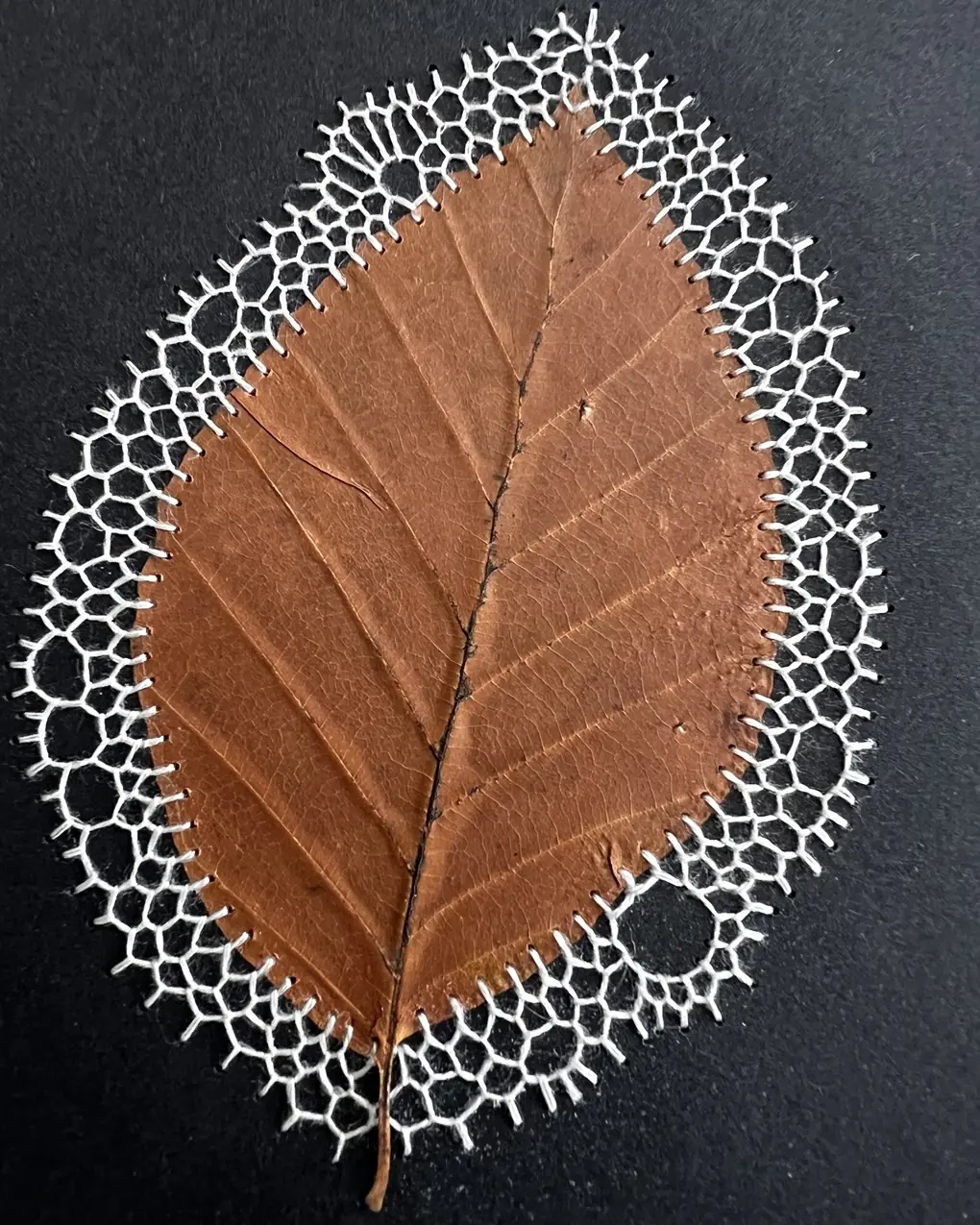
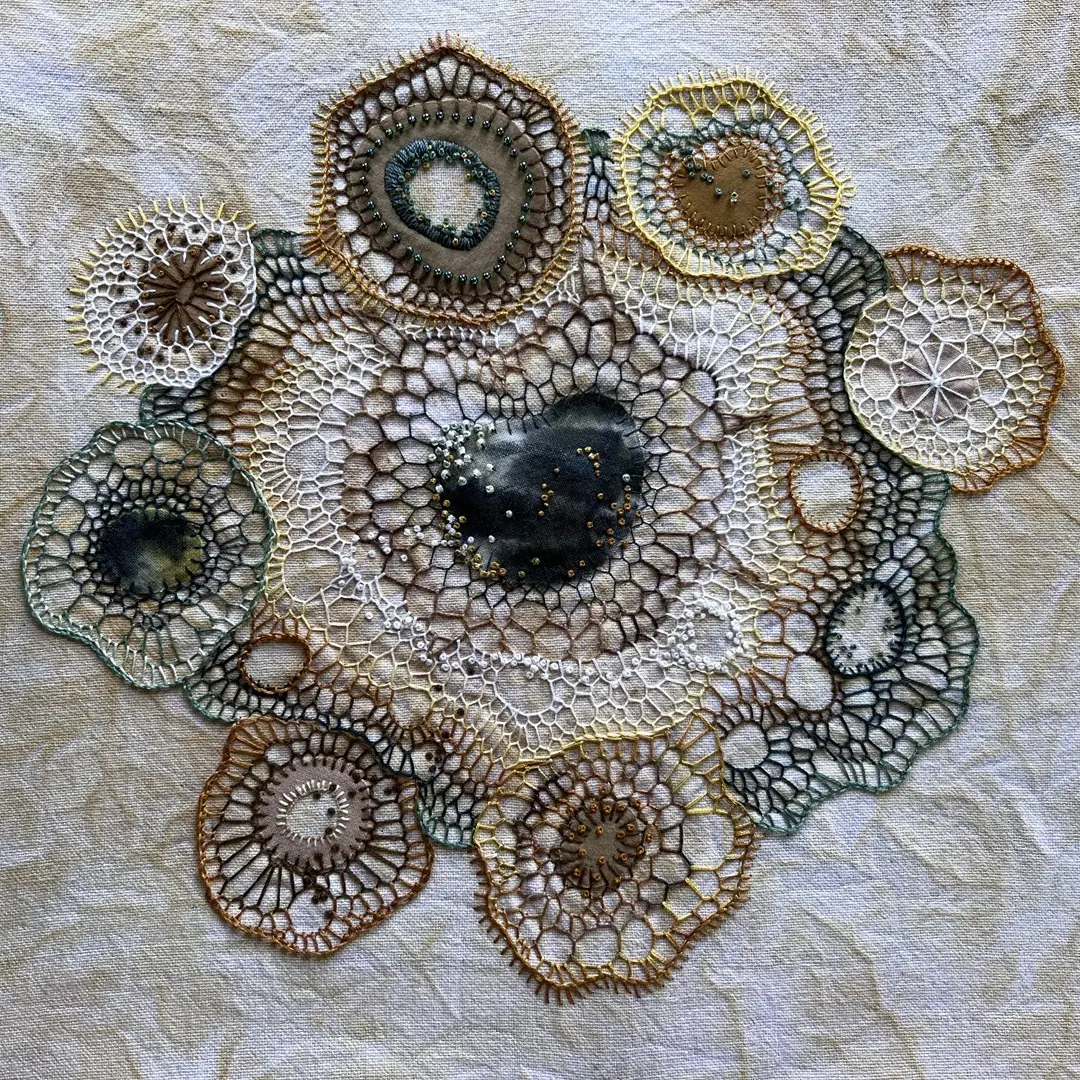
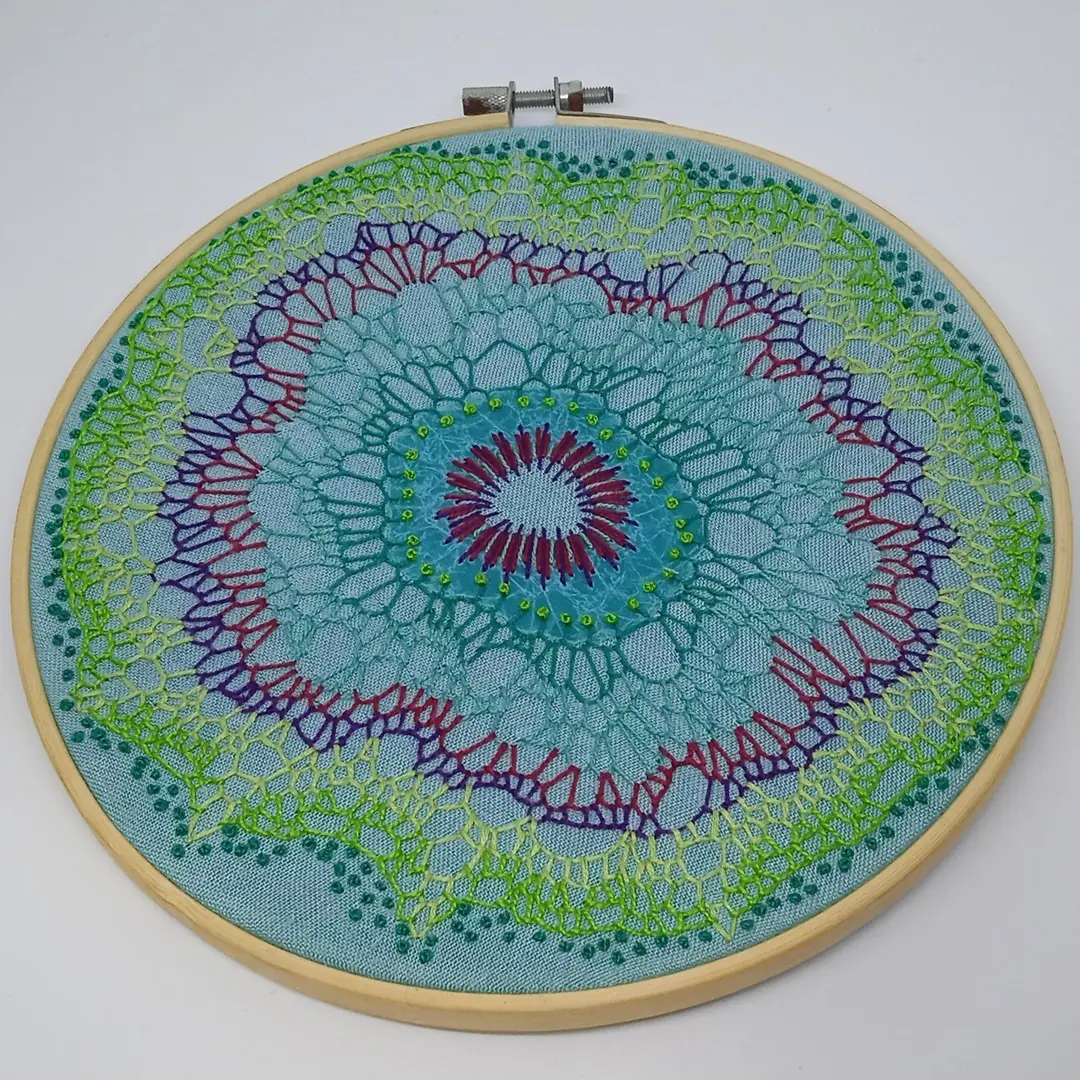
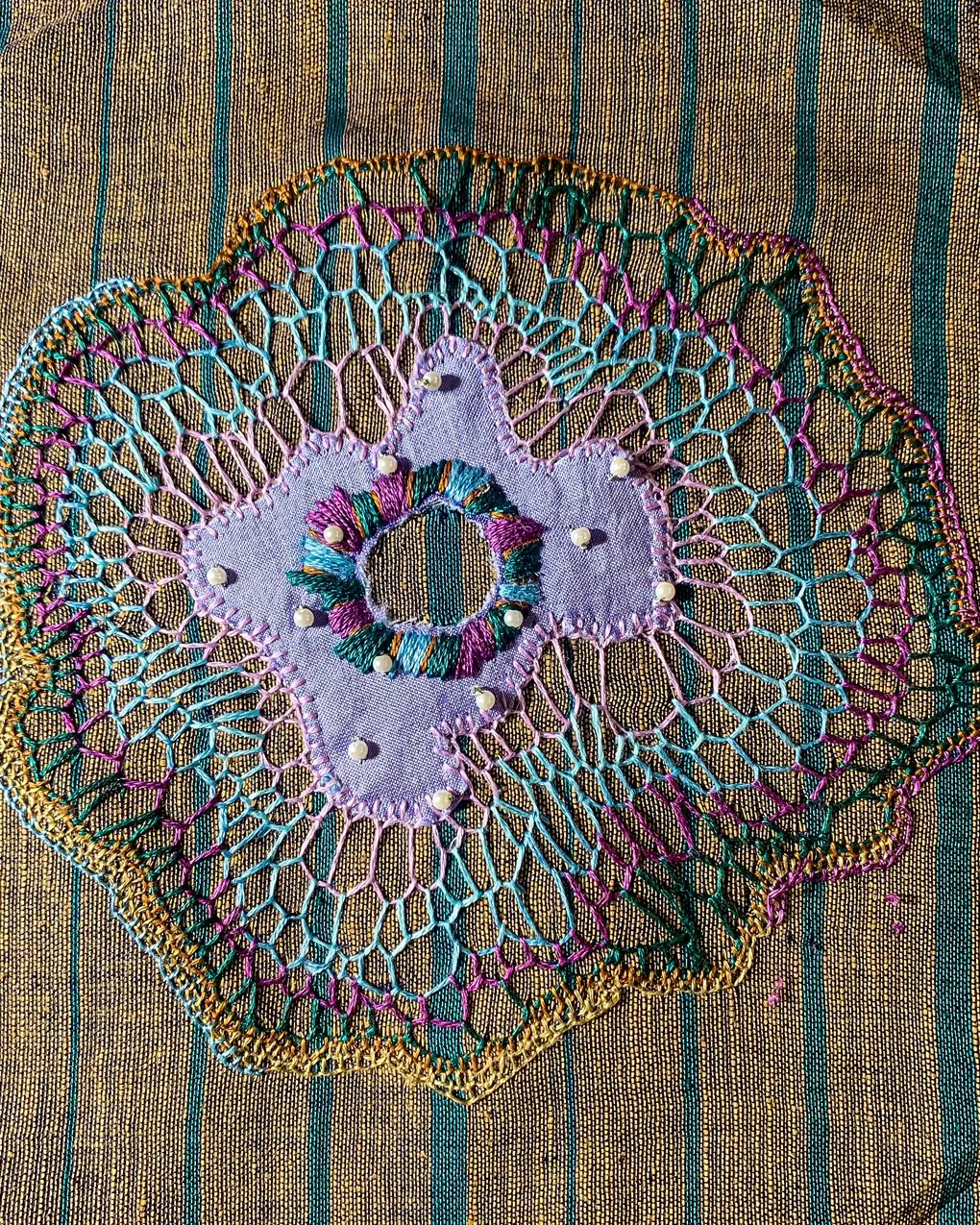
Workshop takeaway
In this workshop, Mirjam Gielen explores a simple stitch in an unexpected way. By placing rows of blanket stitches around an appliquéd shape, and by adjusting her stitch sizes and lengths, she was able to build an imaginary organism. Why not try a similar experiment using your own favourite stitch?
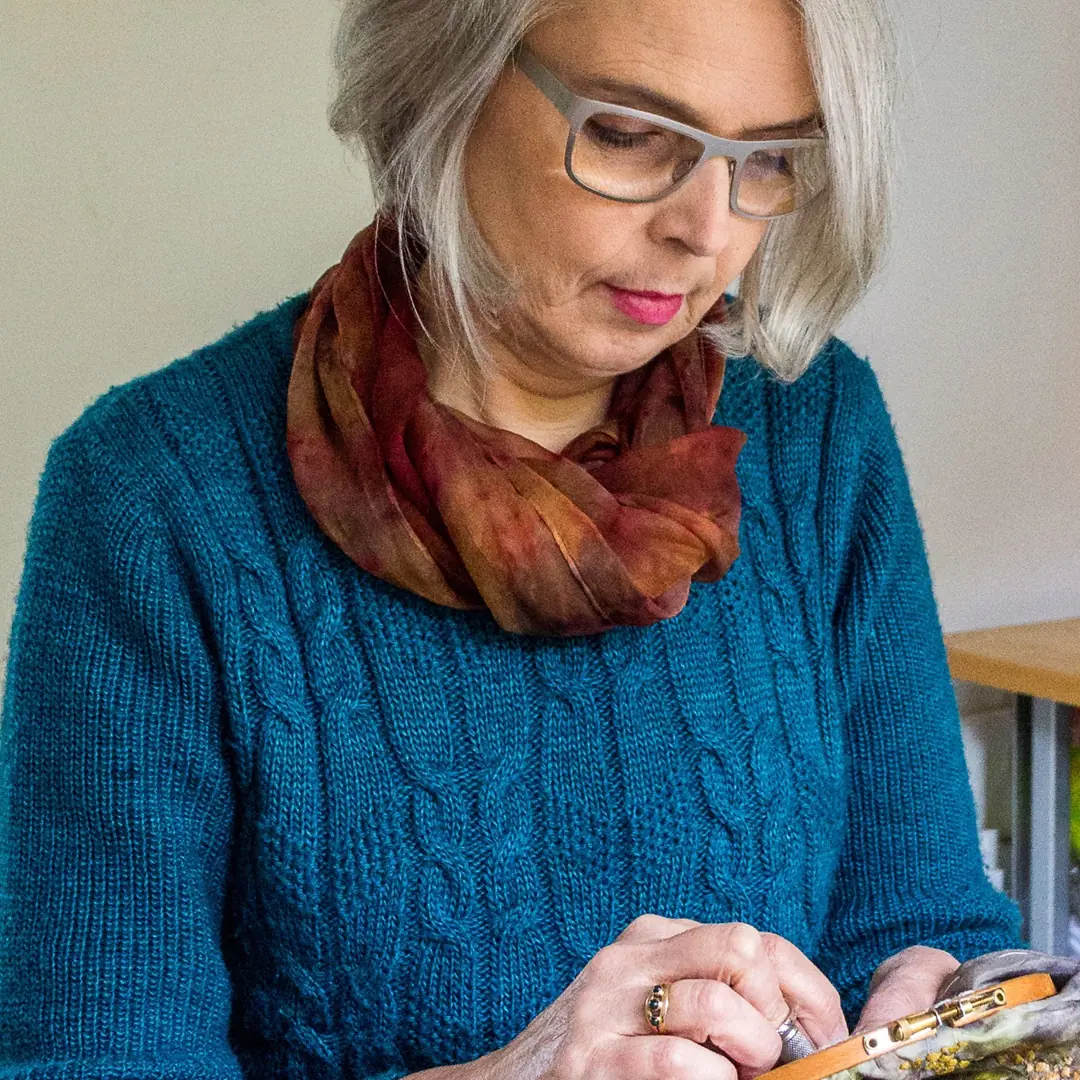
Felt and stitch textiles with Maggie Scott
Maggie Scott’s workshop demonstrates how to make a unique tactile wall hanging using the wet-felting technique. Her design is inspired by the appliqué shapes found in the woven raffia Kuba textiles from Central Africa. Kantha-style embroidery adds a pop of colour and a touch of texture to the artwork.
For this exercise, Stitch Club member Jenny van der Gaag produced a beautifully balanced design with a pop of blue stitching: ‘What a great workshop! I have quite a bit of experience in felting, but this method was new to me. I enjoyed using the African design inspiration and the coarse wool. I was fascinated by the effect the circle has on the whole piece and I am very happy with the end result of my project.’
Marion Carroll, a fibre artist and maker, injected a personal approach for her abstract artwork, The Gathering: ‘I used symbols from my Aboriginal culture, depicting two mobs coming together under protection of a spirit being. The symbols represent man, woman and human, and the hand stitching is representative of the spirit being that guides them. The wool I used was Jacob, Icelandic, Welsh and Shetland, a gift from a Scottish friend. The embroidery thread I used belonged to my late mother. I always incorporate her threads in my work.’
Maggie commented on Marion’s work: ‘It’s so lovely to see your piece and the way you have personalised the symbols so that it references your cultural heritage. The stitching style really adds another layer of interest and, of course, connection.’
Suzanne Russell based her abstract design on Arabic letters and used materials that she had in her stash. She thought that the deep blue colour was lost after felting, so she added lots of tiny stitches and a splash of hot pink, producing a cohesive result that draws the viewer’s eye.
Maggie was pleased to see how much the workshop inspired Stitch Club members and how many people adapted the composition ideas using colours, shapes and symbols that were significant to them: ‘It was intriguing to see the experiments with adding extra elements, and the personalising of the colour choices for the symbols and Kantha stitch – I really enjoyed looking at the strong colour combinations!’
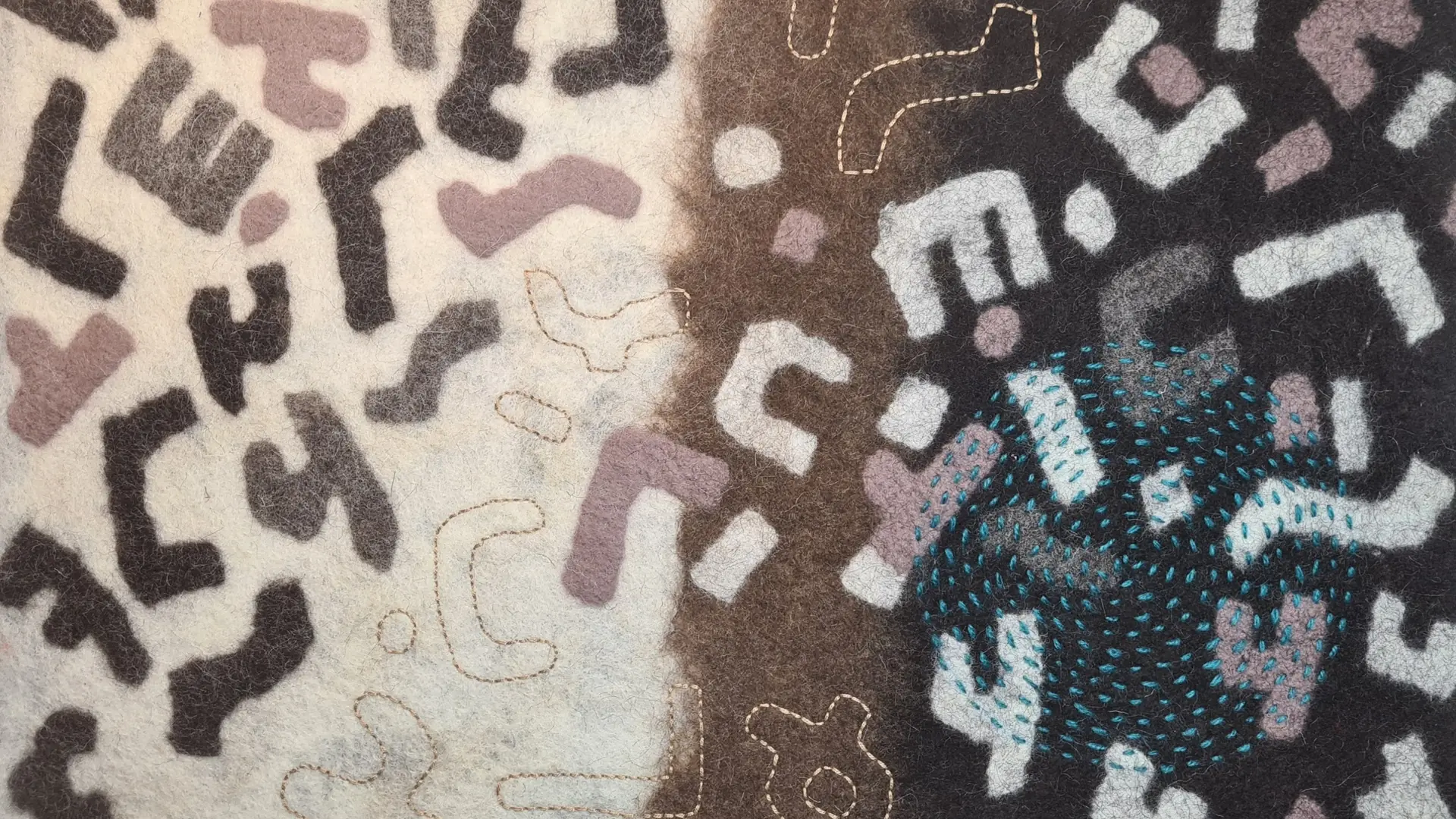
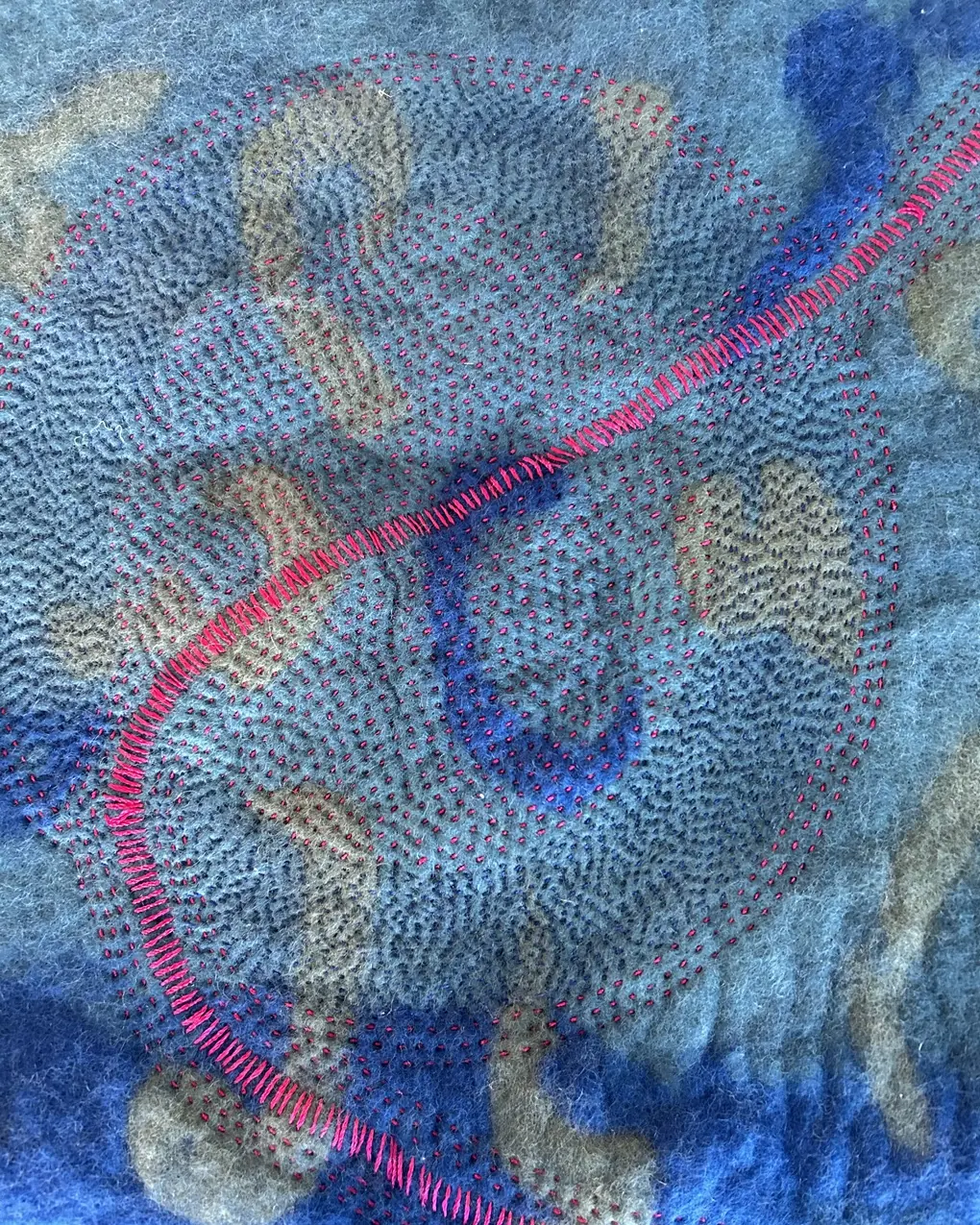
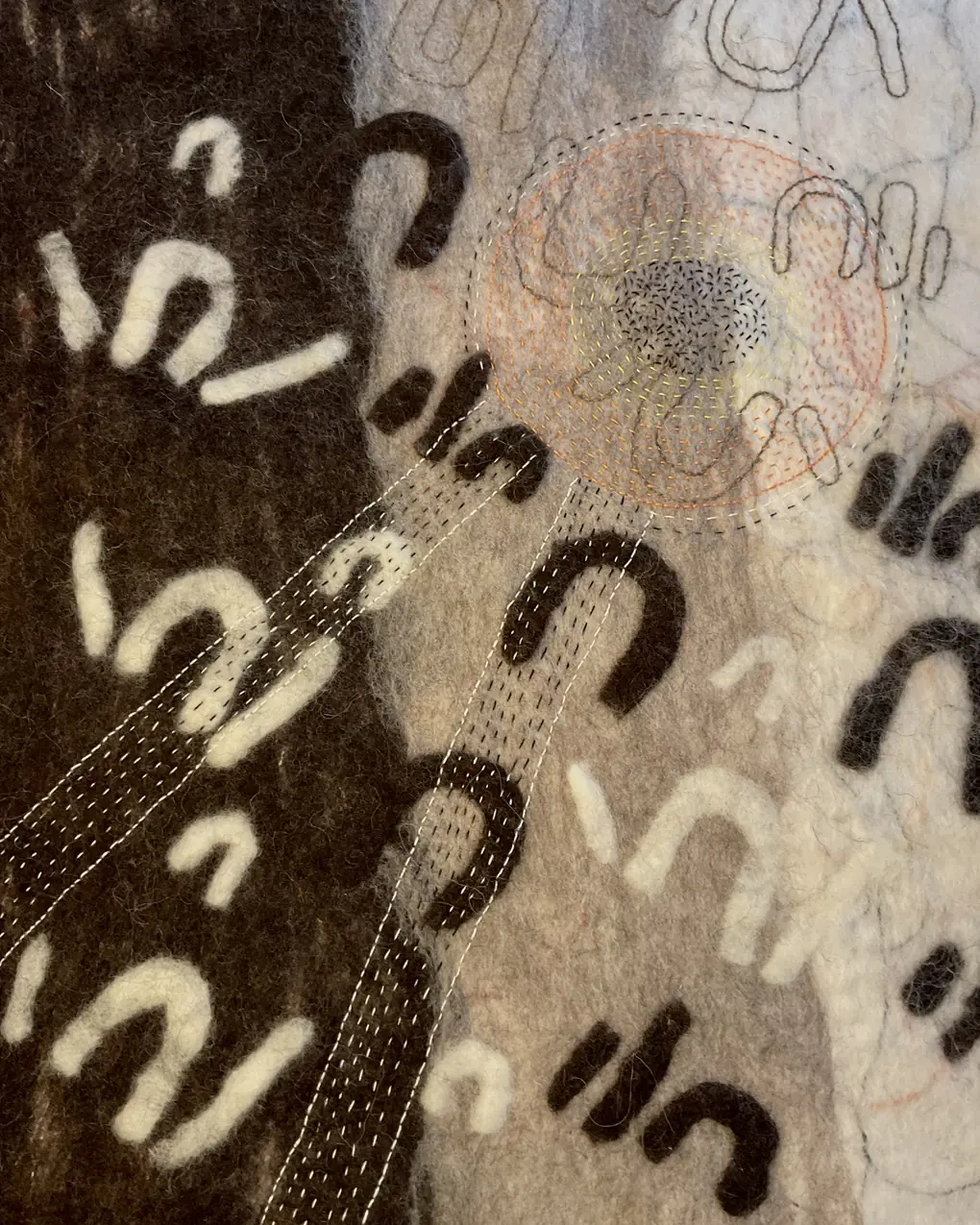
Workshop takeaway
Maggie Scott draws inspiration for this workshop from the bold patterns on Kuba woven raffia cloth from Central Africa, which is often appliquéd with shapes and symbols. And her circular stitched motifs are inspired by Kantha fabrics, which are made using an ancient upcycling handicraft technique of layered fabrics joined together with stitch. It’s good to spend some time researching patterns and shapes from the world around you, or from your own cultural heritage – they can provide valuable ideas for your next textile project.
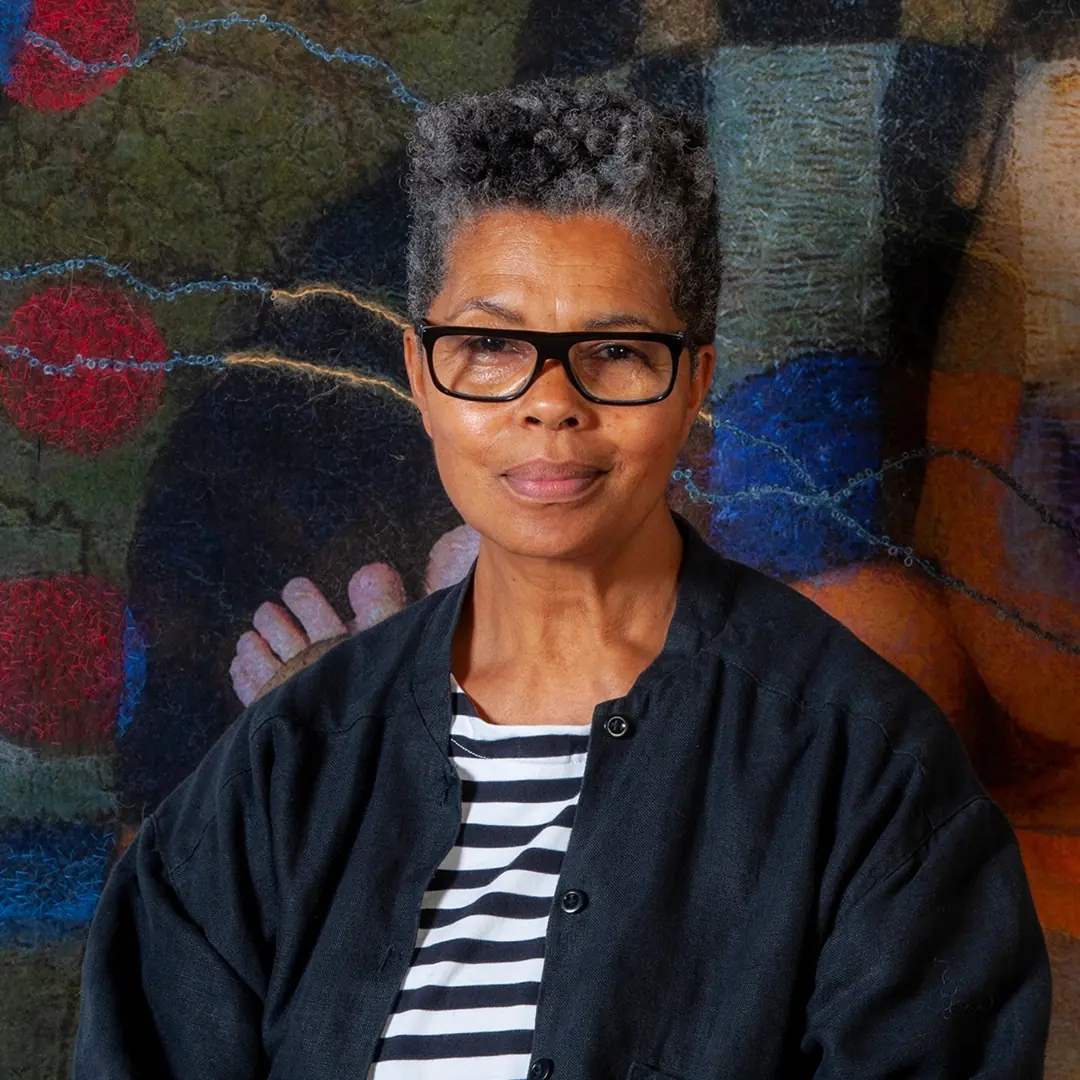
Colour mixing studies with Katherine Diuguid
Have you ever chosen a thread colour only to run out of it, or find that it is unavailable in your favourite store? Katherine Diuguid treats Stitch Club members to a technical but playful colour-mixing exercise. She reveals how to stretch colour usage by mixing threads in the needle, almost like working with a set of watercolour paints.
Starting with a dab of stitched colour, threads are combined in a methodical way to examine the colour effects they could create – producing some surprising results!
Armed with this knowledge members can use thread mixing to achieve a more painterly look within their embroideries, just like the Impressionist paintings Katherine adores. After completing this workshop, Stitch Club members began to view their threads from a new perspective – as a palette of infinite possibilities.
Esther Montero liked the systematic approach of the exercise – which allowed her to analyse her colour-mixing results as she went along – and loved all Katherine’s tips on how to handle embroidery threads.
Taking a linear approach, Hyosook Lee really enjoyed blending colours with fine threads, using white thread as her base colour.
Debbie Rose-Lewis started with a base colour of mossy olive green: ‘Adding the blue surprised me – it looked very pale, almost white, as a single strand, but really popped out next to the other colours. I stitched an extra blob of each colour at the end of each direct line to the centre base colour, for reference. This was a fun and interesting workshop, and it will definitely help with colour blending in future projects.’
Anne Crowther chose Aida cloth to stitch on, and red for her base colour: ‘I realised that the red and orange I chose are very close in colour to the base thread, after I started stitching, so I continued with them. I was surprised to find what subtle changes in colour I ended up with.’
Katherine Diuguid relished sharing her knowledge with Stitch Club’s members: ‘Seeing the enthusiasm members channelled into their work was exciting, creating a fantastic group of colour maps that displayed our ability to stretch colour in stitch. The camaraderie and encouragement of the group struck me.’
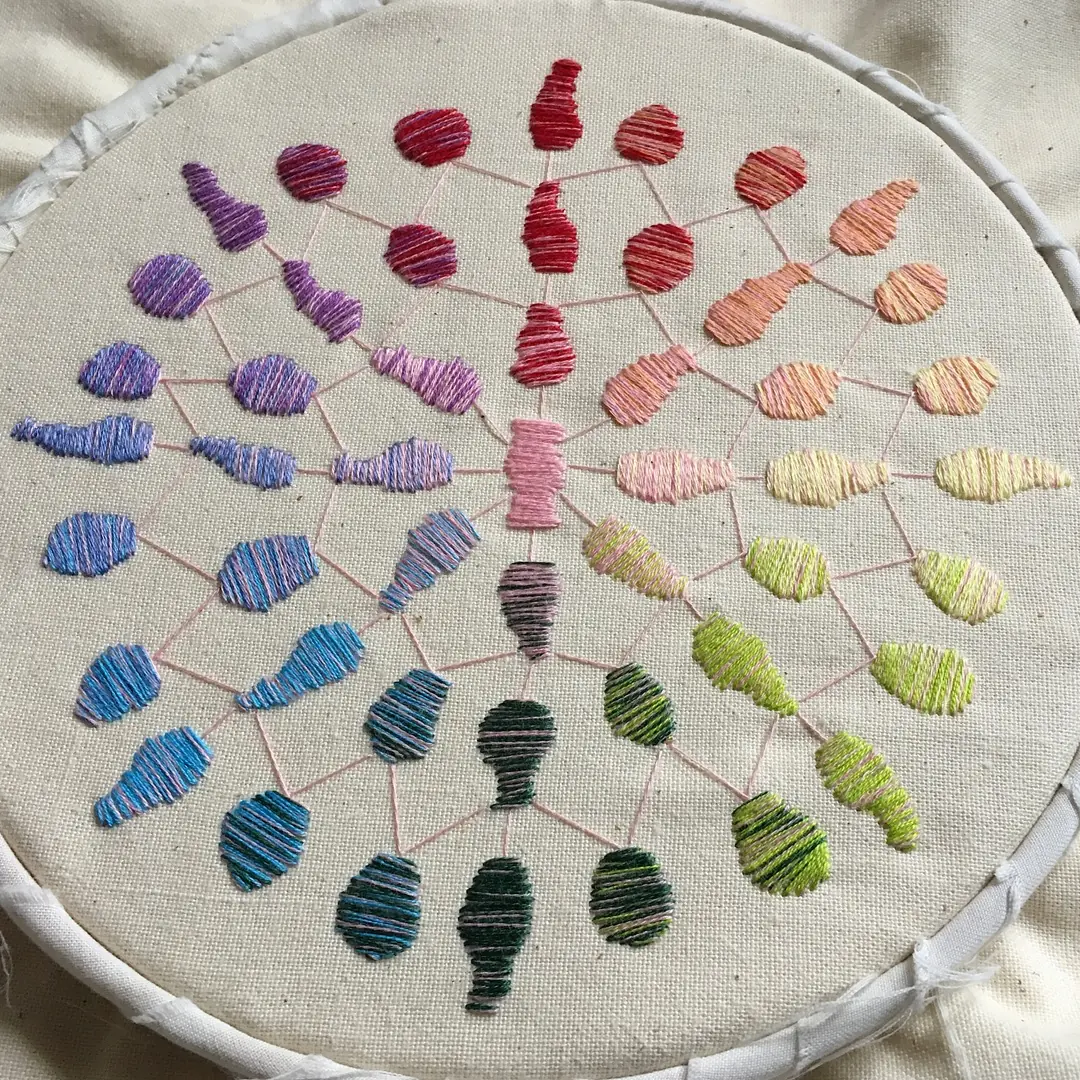
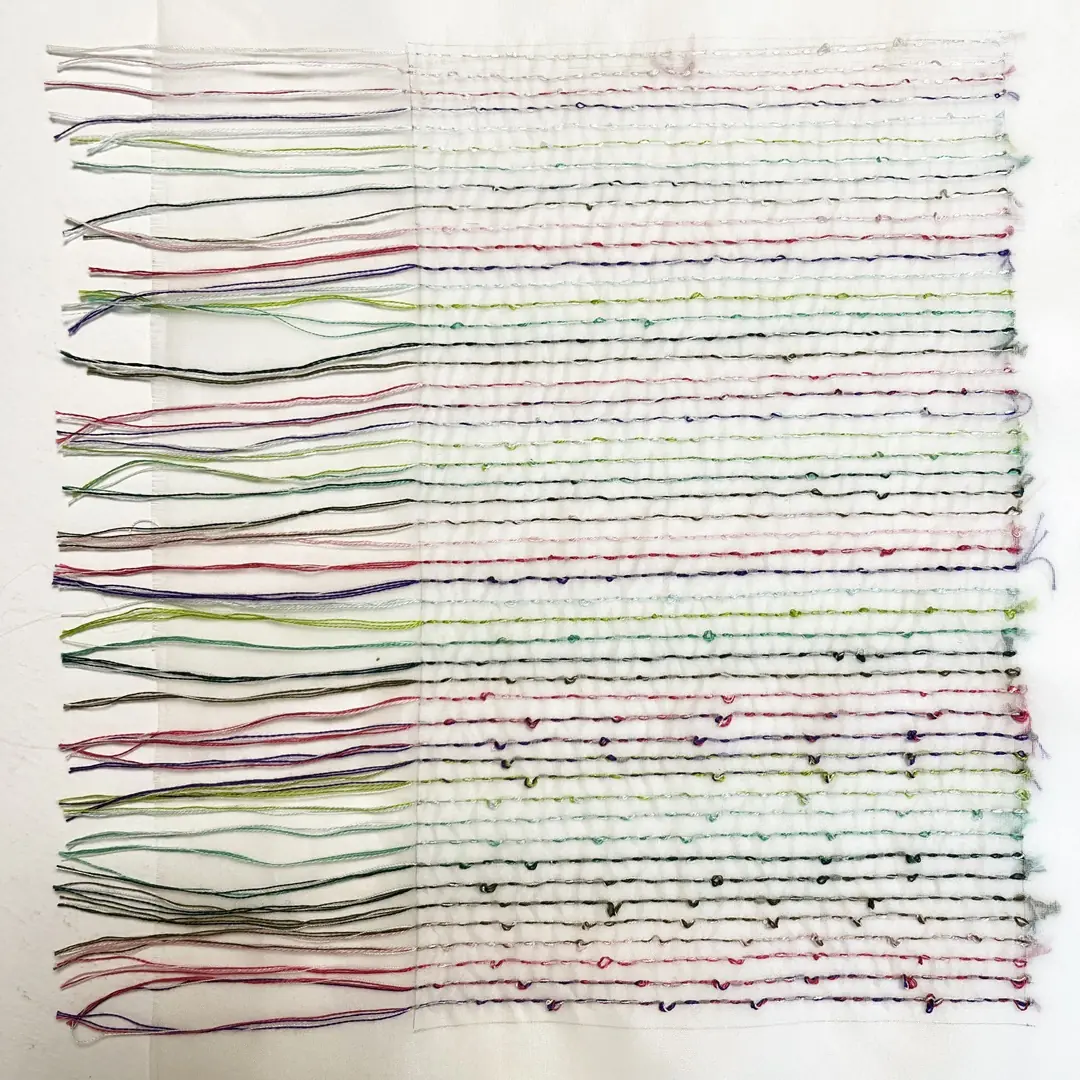
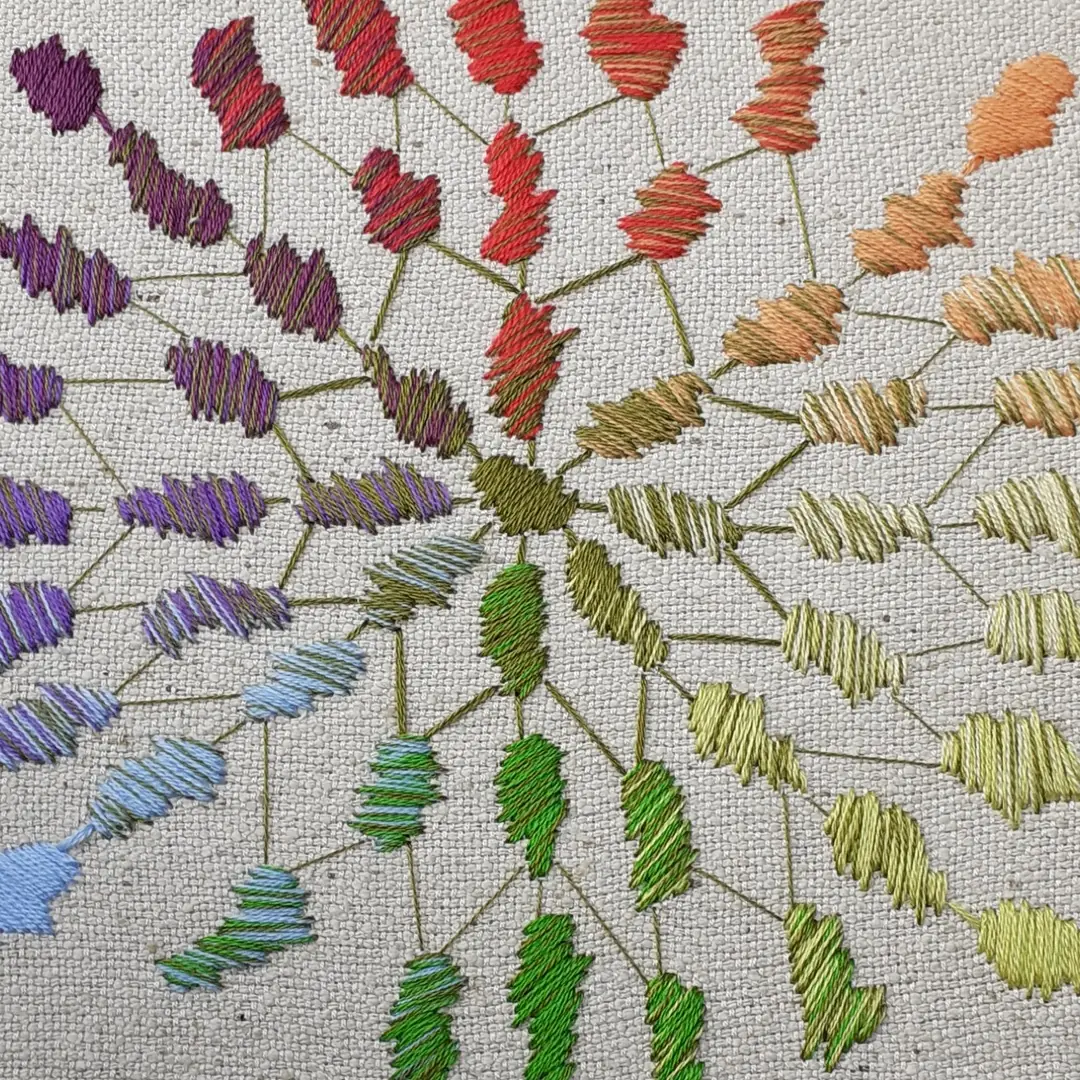
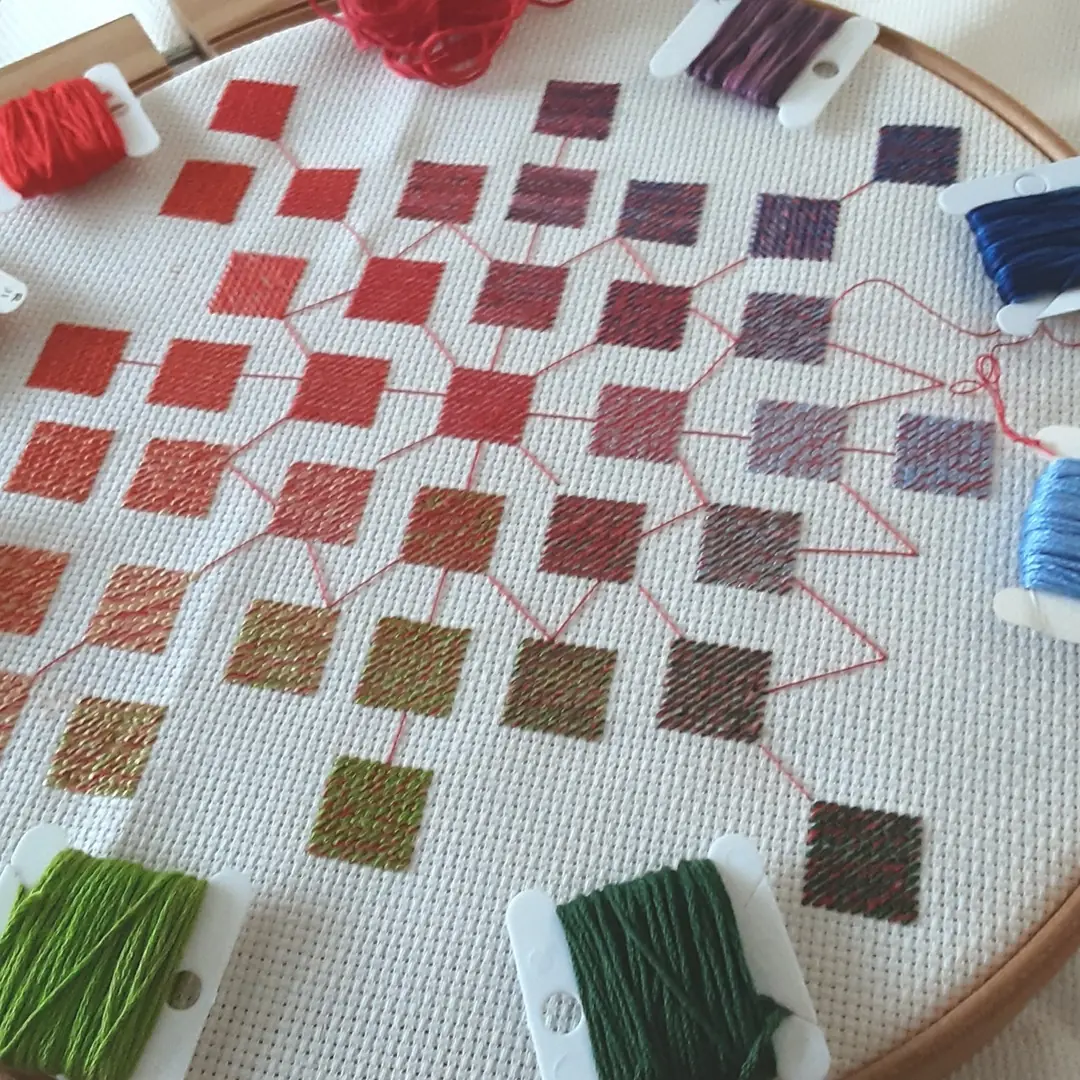
Workshop takeaway
Katherine Diuguid is keen on making samples. She recommends testing out colour and stitch options before bringing them into your work. In this workshop, members mix different colours of threads in the needle to find out what effect they have on one another. So, if you’re struggling to find that perfect colour, grab some threads and a small piece of fabric, and make a quick sample. Choose a couple of thread colours, take one or two strands of each colour and thread your needle with them. Then create small areas of stitches using different thread mixes – you might be surprised with the results.
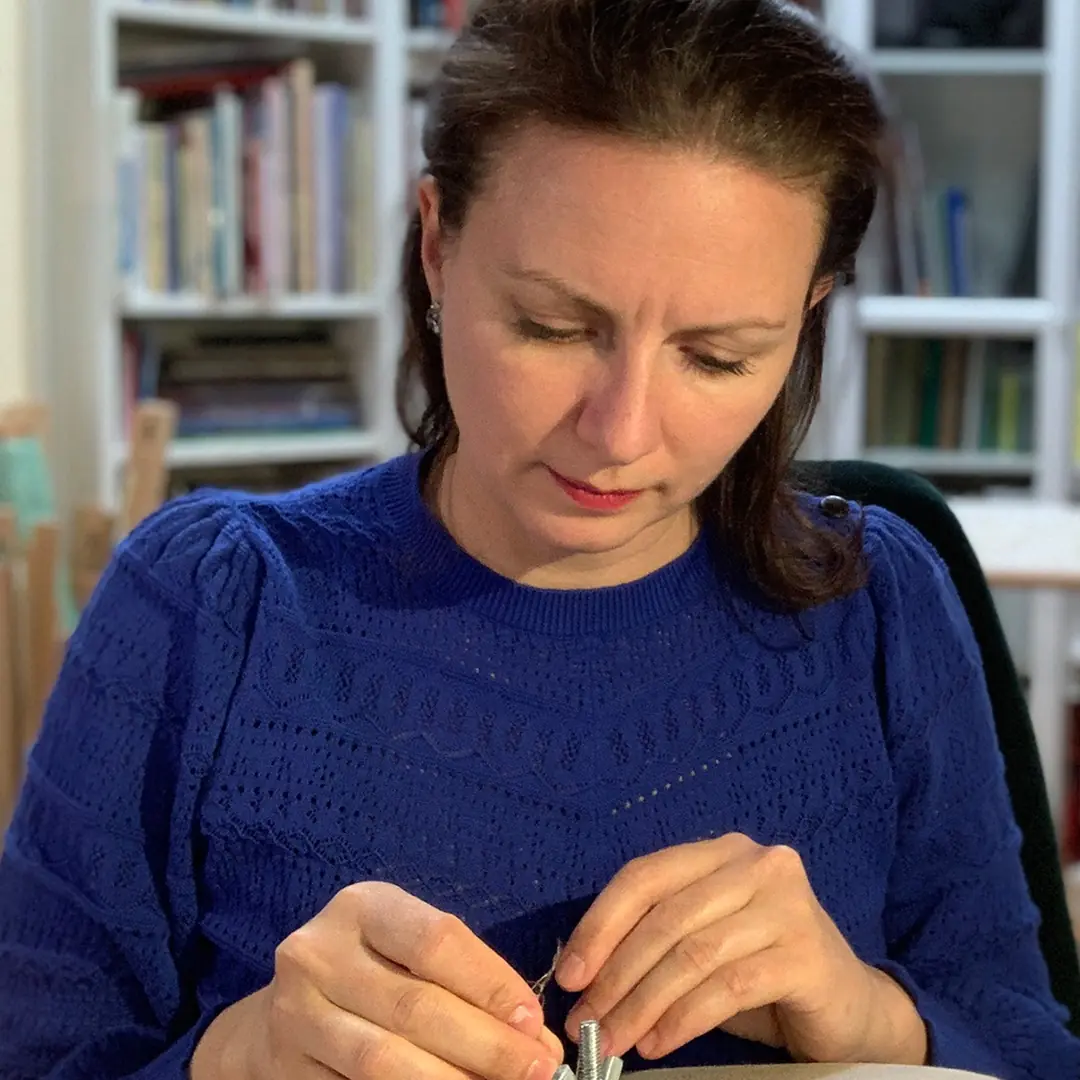
Imperfect memories with Cas Holmes
Do you use photographs to inspire your work? In Cas Holmes’ workshop, members consider the conceptual processes behind the use of images, and how using images as a source material can inform your creative process.
Memories are never completely sharp and accurate – they always become hazy over time – and this workshop leans into the idea of imperfect memories. Cas shares a low-tech way to include printed text or personal photographs in a collaged and stitched fabric composition. The quality of the transferred image varies and is not intended to be perfect, but they help to capture a sense of time and place, becoming ‘imperfect snapshots’ of memories.
Cas Holmes: ‘Members embraced imperfection as part of the process of learning about media usage in image transfer. Combined with stitch I was able to see a growing confidence in each individual developing their own narratives and response to the processes. We worked together, shared and exchanged ideas in an open and safe community of stitch artists.’
Heléne Forsberg took her cue from a photo of the horses she encounters on her local daily walk, creating an atmospheric winter scene.
‘I really liked taking my time with the pieces of fabric – looking at them carefully while assembling them and deciding where to place them, like how Cas showed us in her video. The slow process is satisfying to me.’
Heléne Forsberg
Nancy Luna-Walker based her serene and cohesive collage on her morning ritual of coffee while watching the garden birds: ‘My main intention was to experiment with blending the different fabrics and the black and white print into the collage, by extending patterns and stitches across the fabrics. I put a light yellow watercolour wash on the mug. This piece will go in my sample book with lots of notes on what I learned from this workshop.’
Gill Tyson found inspiration in her family’s photo album, as well as from personal stories about her great aunt Marjorie and the work she did during the First World War. Gill used a picture taken at The Barbour Institute, Tattenhall’s village hall since 1898, a building requisitioned as a military hospital during the conflict. Rust-dyed fabrics and cotton scrim added to the strength of this composition.
‘This workshop has finally spurred me on to start Marjorie’s story in a series of stitched works. She was one of a whole army of women who supported the war effort at home, all with their own stories to be told.’
Gill Tyson
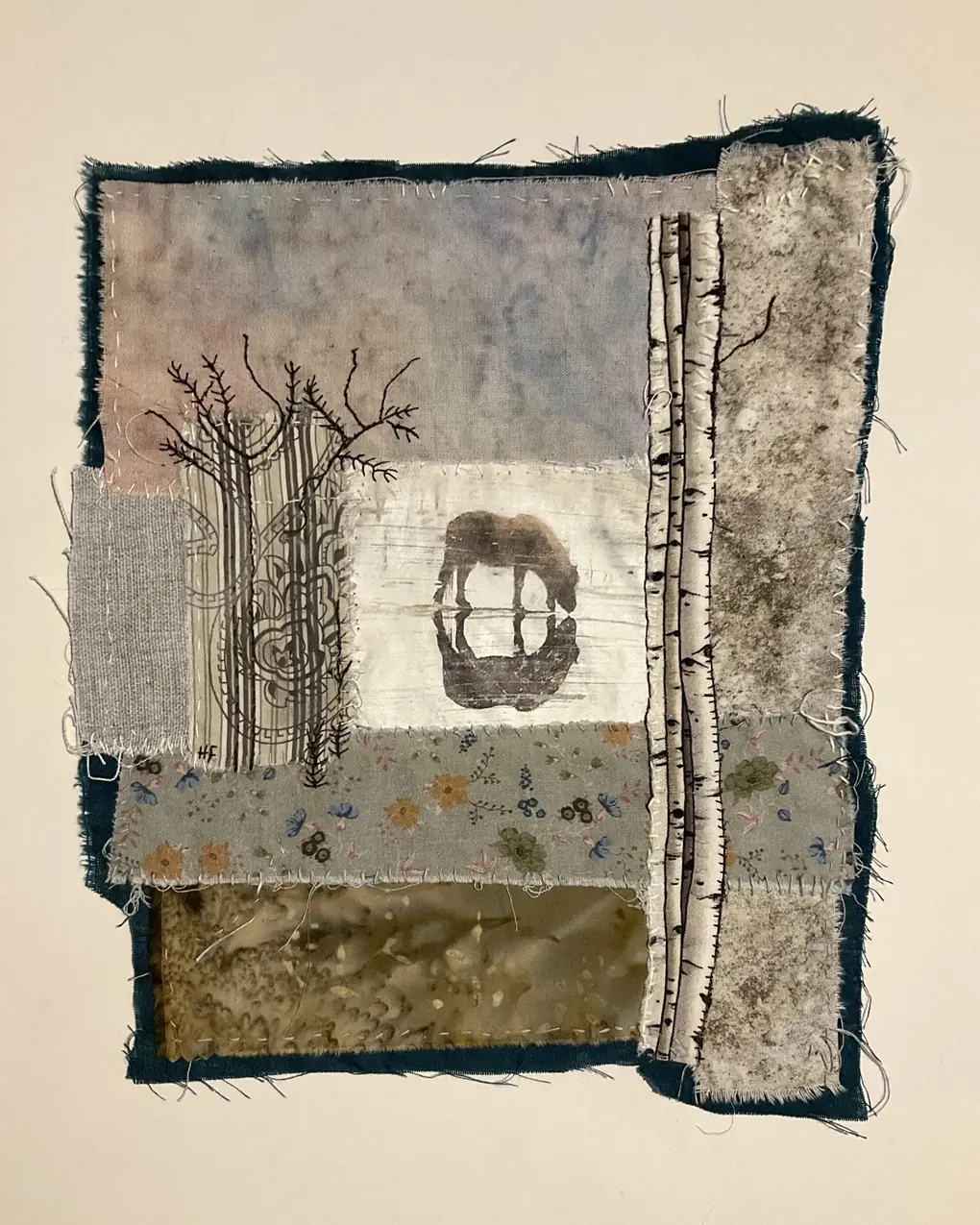
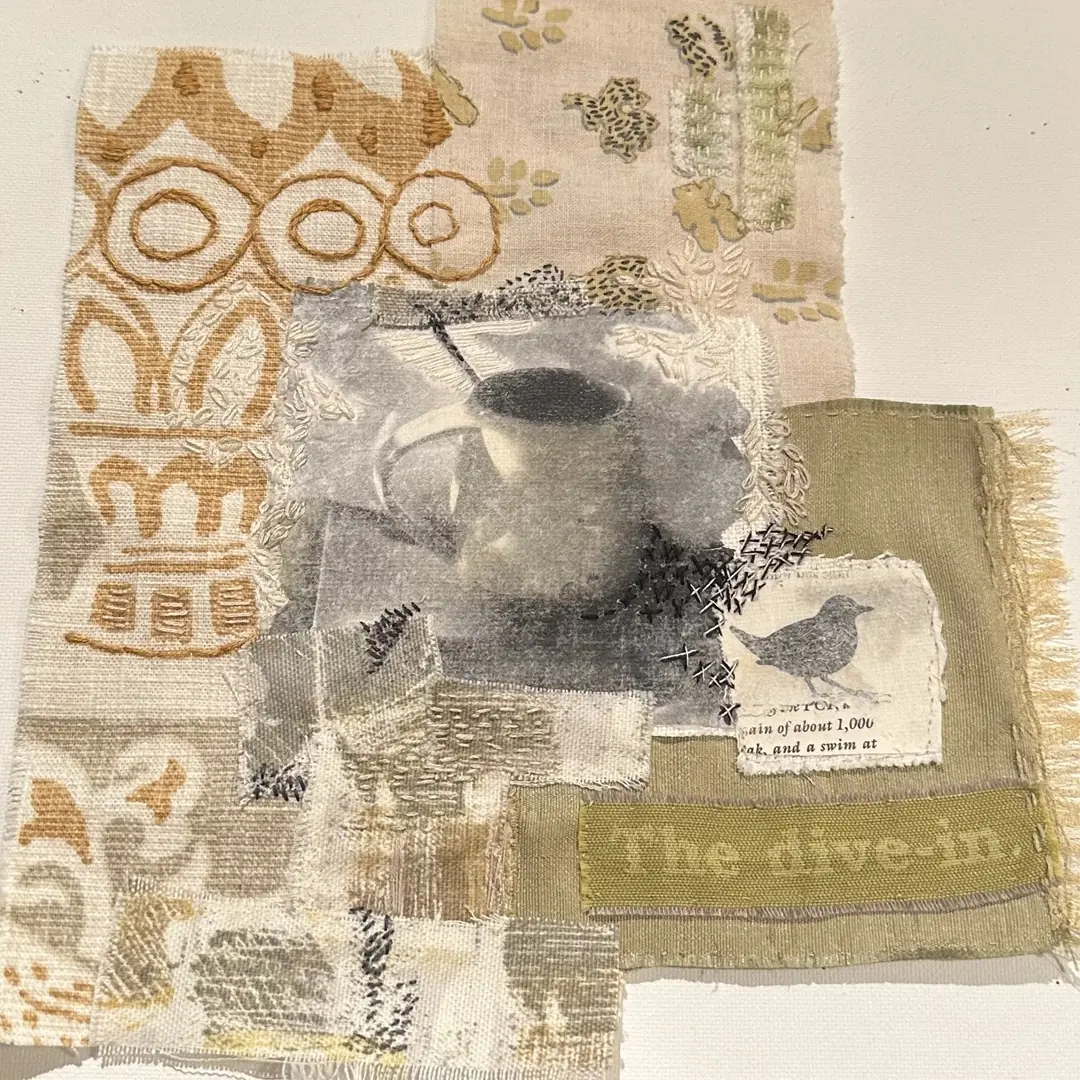
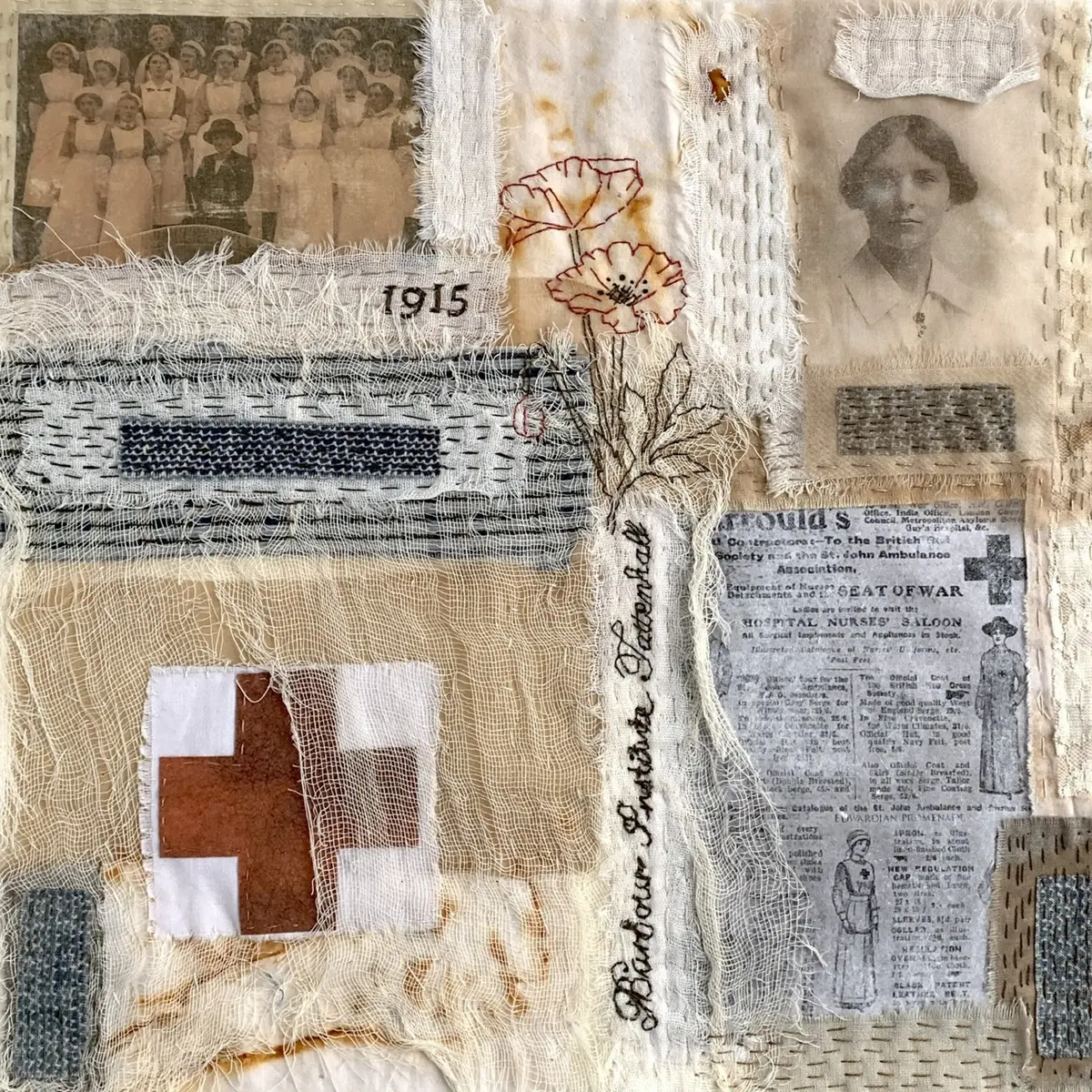
Workshop takeaway
In her workshop, Cas Holmes reveals that successful collages take some effort to get right. After she transfers her images using an intriguing low-tech method, Cas allows herself a good chunk of time to play around with the balance of her composition. She considers her colour and pattern choices, and how the materials work together as a whole.
The next time you’re building up layers of different fabrics into a collage, allow yourself the time to keep moving things around and trying out different options. View the work from a distance to see if the balance of the composition works. Step away from the collage and return to it later – you might find you’ve changed your mind. During this process, take photographs of combinations that you like, so that you can recreate them later.
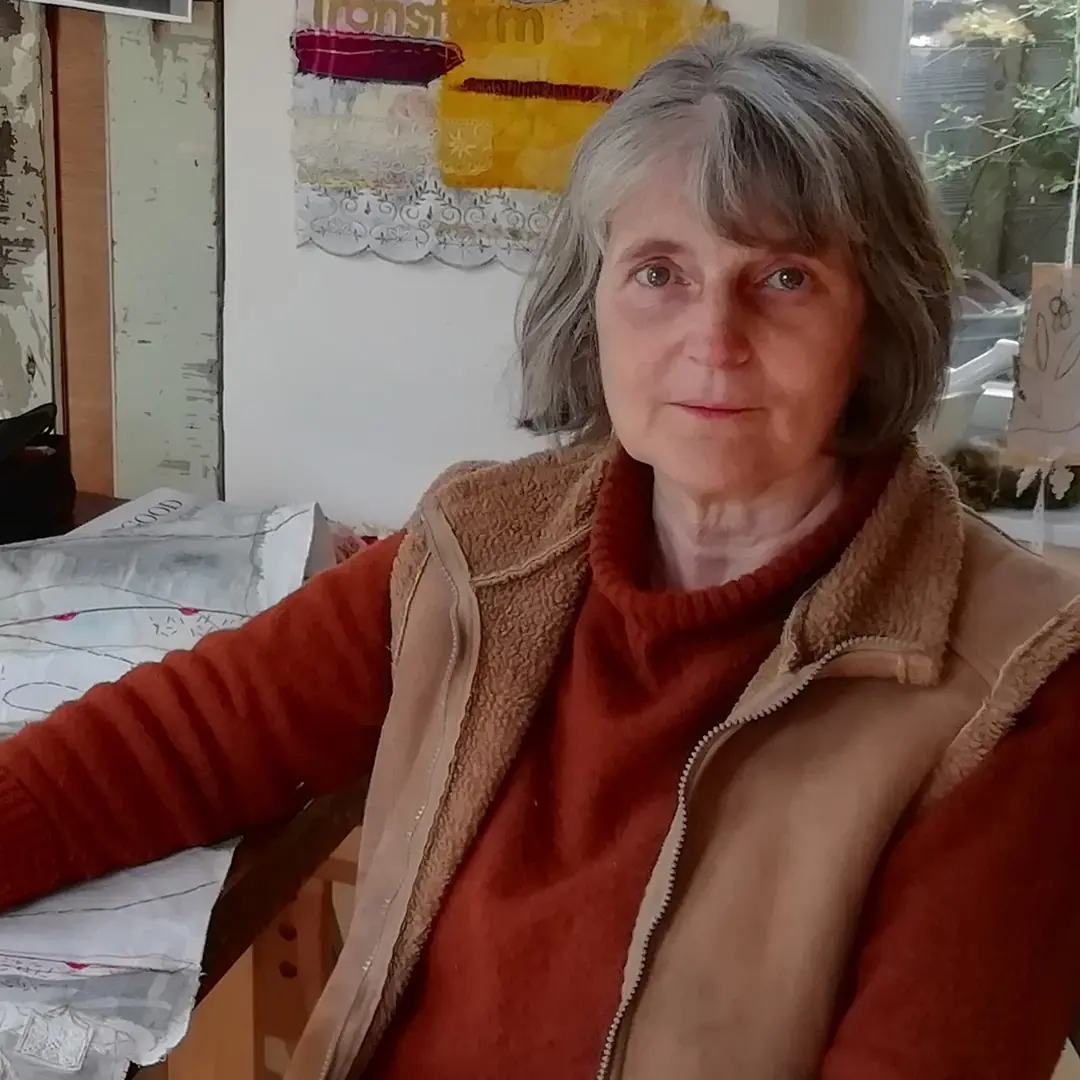
Making a sculptural vessel with Meredith Woolnough
What do you do with your offcuts of thread when you’ve finished stitching? Do you throw them away, or collect them in a jar to use in other projects?
In Meredith Woolnough’s workshop, Stitch Club members are asked to turn those thread snippings into a stunning collection of moulded bowls and flowers, unlocking some of the sculptural possibilities of working with embroidery and water-soluble fabric. The process is quick and easy, with limitless outcomes. This workshop became addictive for many!
Meredith loved seeing the amazing, varied and imaginative creations posted in Stitch Club, and marvelled at the creative and supportive community she encountered. She was delighted that Stitch Club members were open to trying this unusual form of sculptural embroidery.
Stitch Club member Zane Shumeiko was curious to take this idea further by incorporating alternative materials.
Zane Shumeiko: ‘Before starting this work I questioned myself about what materials are leftovers or waste materials that I encounter daily. The answer was my hair. Human hair is considered a waste material generally. I decided to incorporate it into these experimental small 3D objects. I enclosed white and black threads that represent my good and bad days. The red, golden and metallic threads represent life force, friendships and connections.’
And Maggie Rastall decided to experiment with hand stitching on the water-soluble fabric, rather than using her sewing machine: ‘I’ve made a few before but never with hand stitching. Thanks to Stitch Club for giving me joy in hand stitching – I would never have spent a whole afternoon hand stitching when I could use a machine. It is made with waste silk thread that I use in felt making. The joy is that you can really see the hand stitching.’
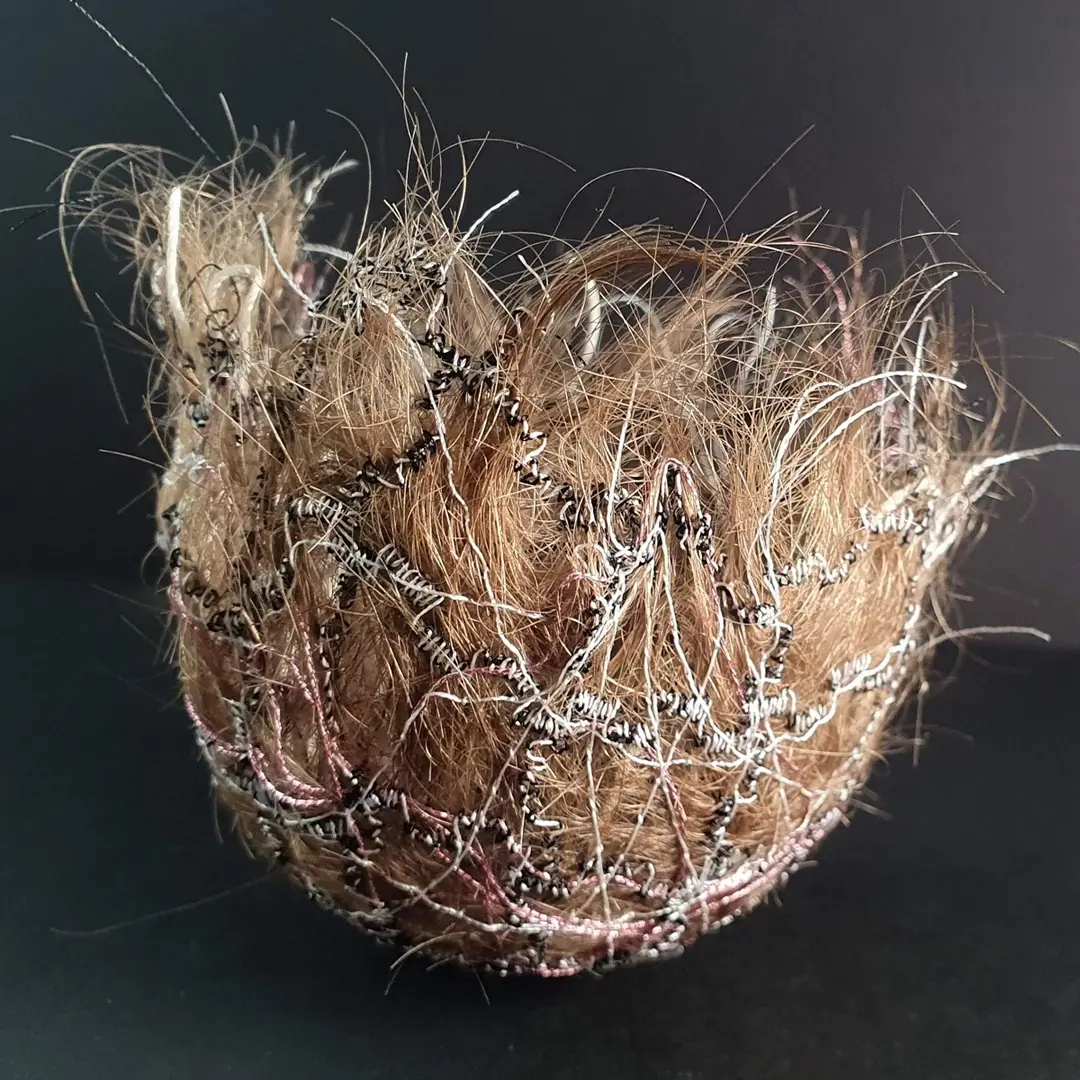
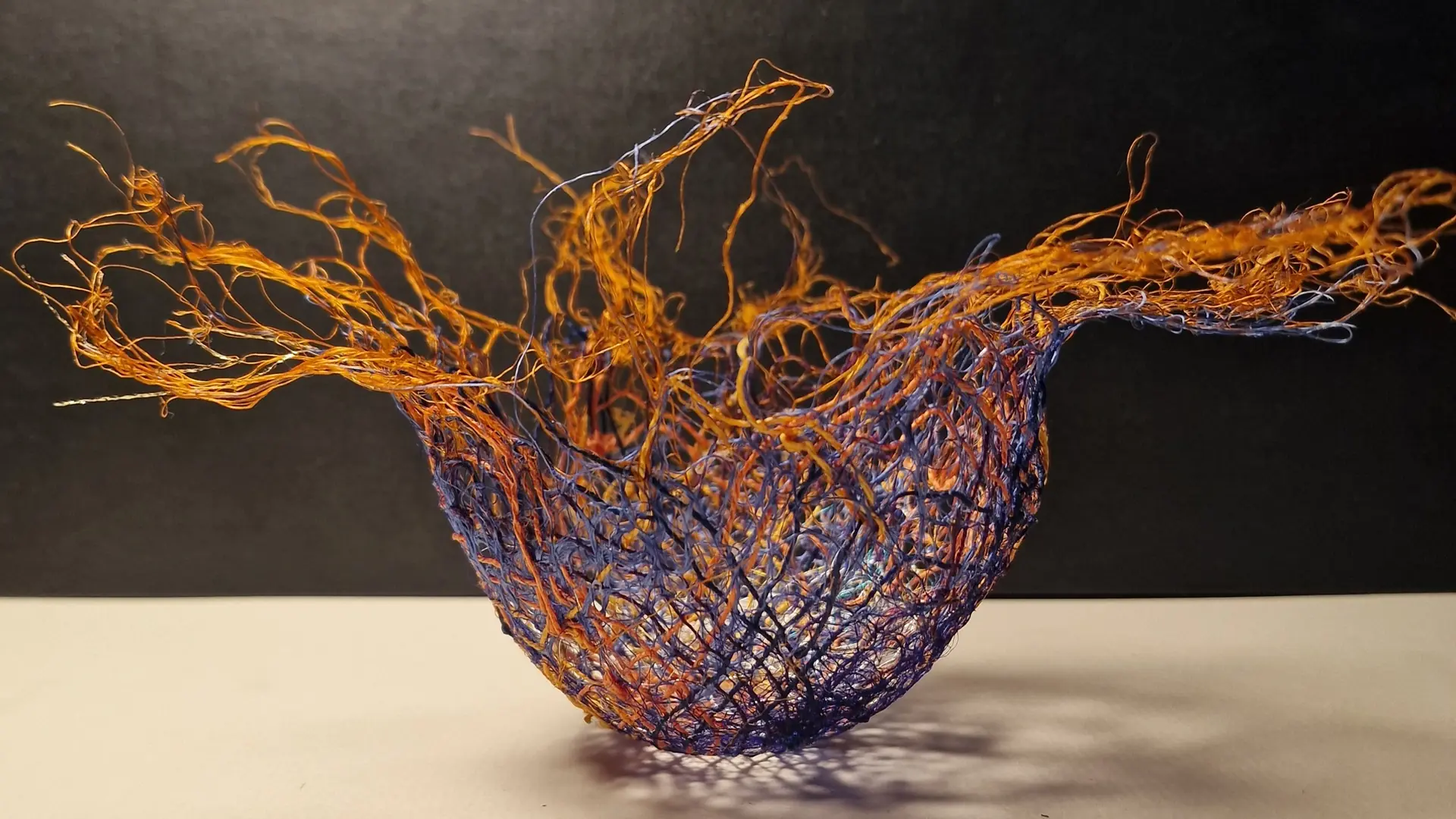
Workshop takeaway
In this workshop, Meredith Woolnough encourages us to think about sustainability. She incorporates waste thread snippets into stitched bowls made using her signature technique of machine stitching on water-soluble fabric. Waste threads and leftover fabric snippets can be included in almost any project. How can you use up waste materials in your own projects?
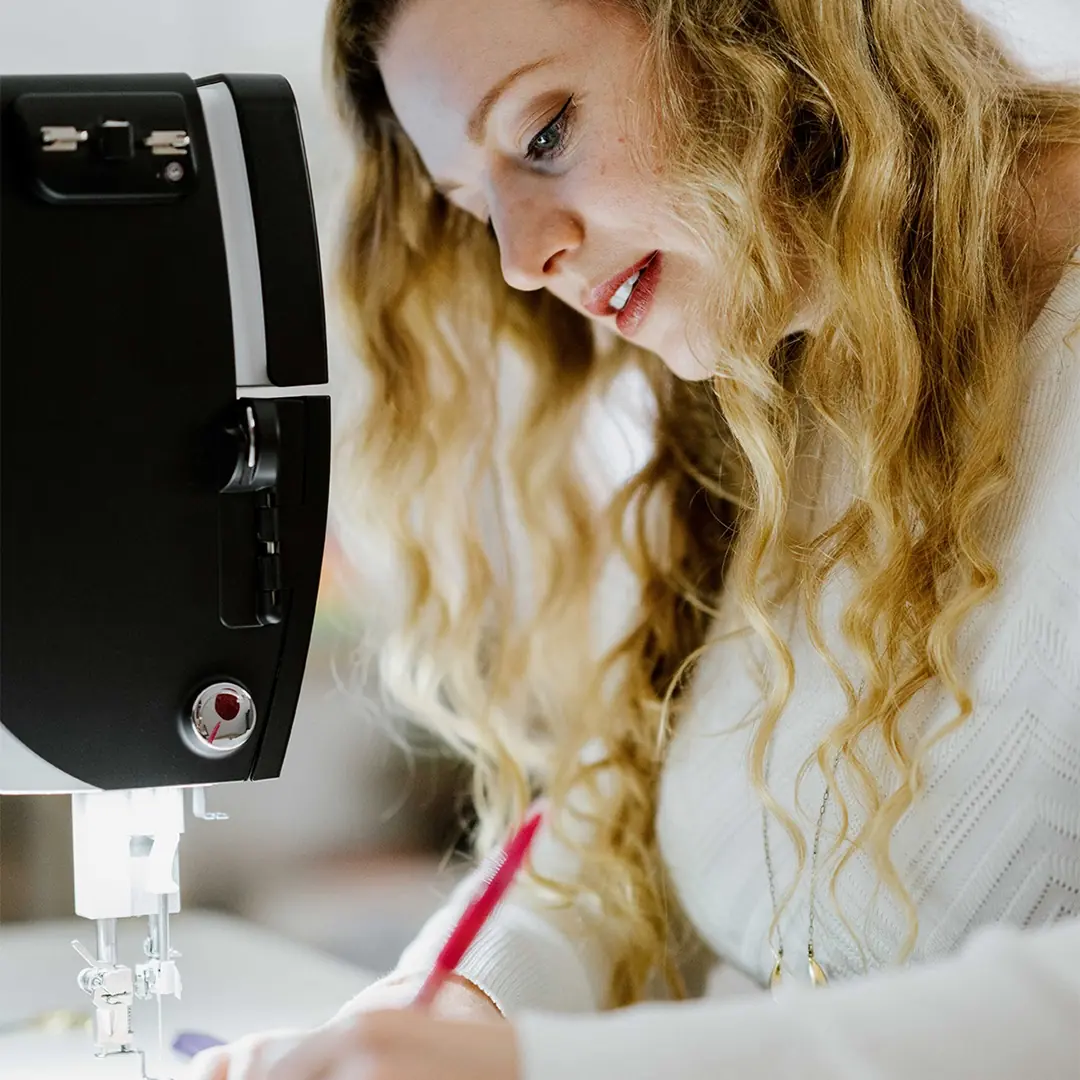
Painting on fabric with Monique Day-Wilde
In her workshop, Monique Day-Wilde invites Stitch Club members to play with watery paints, showing ways to create a variety of effects. Painting on fabric can have unpredictable results, so the challenge is to embrace these.
Members are encouraged to enhance the fabric by experimenting with their embroidery stitches and thread colours, to create a cohesive finished work. This project bears similarities to the mindful ‘colouring in’ graphic design illustrations that Monique also creates, and the act of relaxed experimentation and play is the ultimate aim of this workshop.
Catherine Dewhurst was unsure when to stop with her stitching, but with the support and encouragement of Monique and other Stitch Club members she added a few more embroidered adornments to the hair and running stitch details on the dress, creating a beautiful and whimsical scene using her painted fabric.
Grace Megnet also sought advice: ‘At Monique’s suggestion, I stitched some more on my artwork (including backstitch, seed stitch, buttonhole stitch, stem stitch, french knots, and trellis stitch). I think she was right.’
Richard Tremelling wasn’t happy with the muddy look of his painted fabric: ‘The base fabric was as old bed sheet that I had buried in my compost bin a year ago. I was wishing for some interesting marks but it just turned out a dirty grey, so I decided to paint over it.’
Using Promarkers to add more intensity to the colours, Richard then stitched the lower part of the composition, creating a horizon effect and the sense of dark dystopian landscape.
Tammy Vanderbur created a striking work and Monique particularly liked the strong graphic approach with its bold straight stitching and layers of colour.
Monique Day-Wilde loved the response to her workshop: ‘I was hoping for different ideas and creative interpretations, and the members certainly delivered – I am delighted with the wonderful work they have produced.’
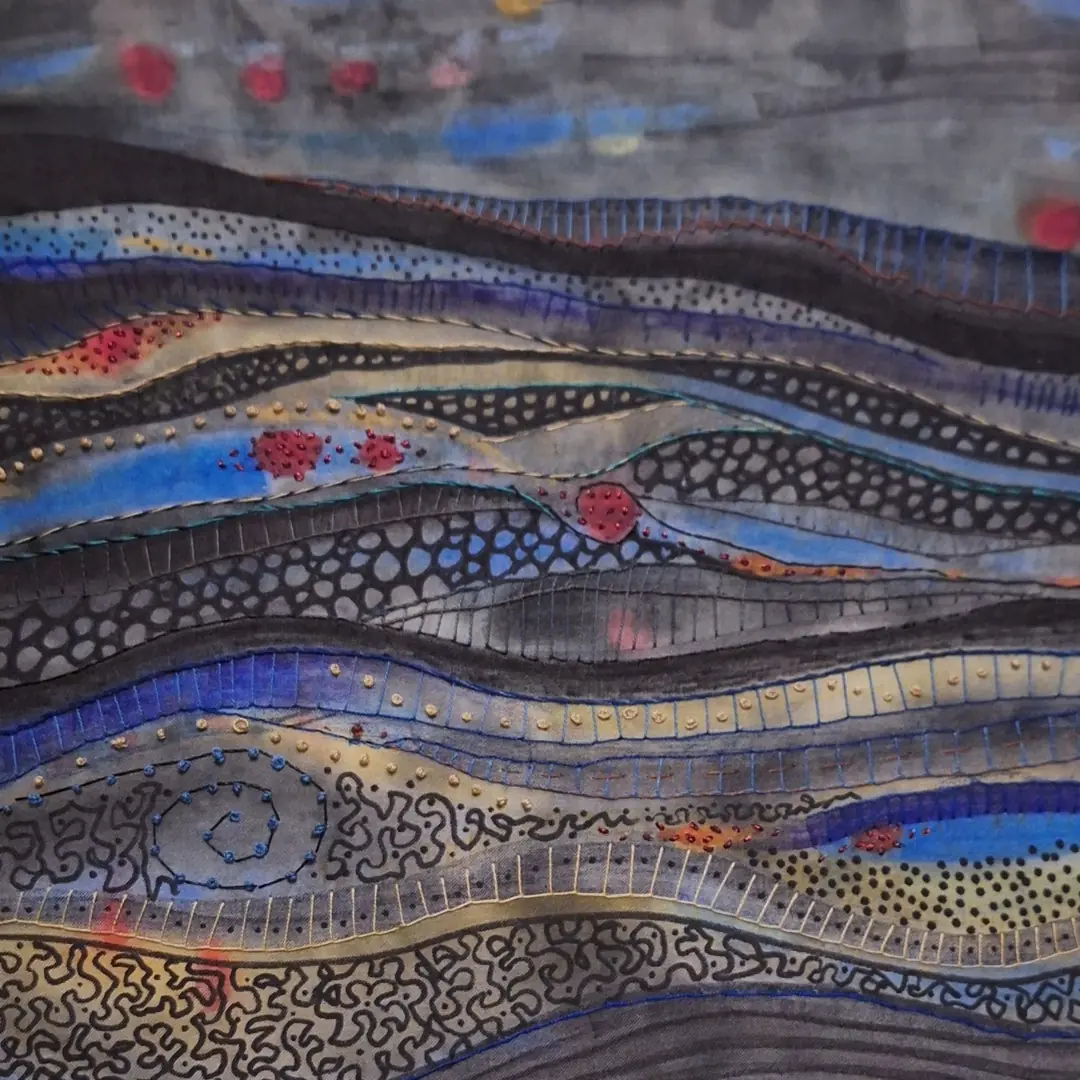
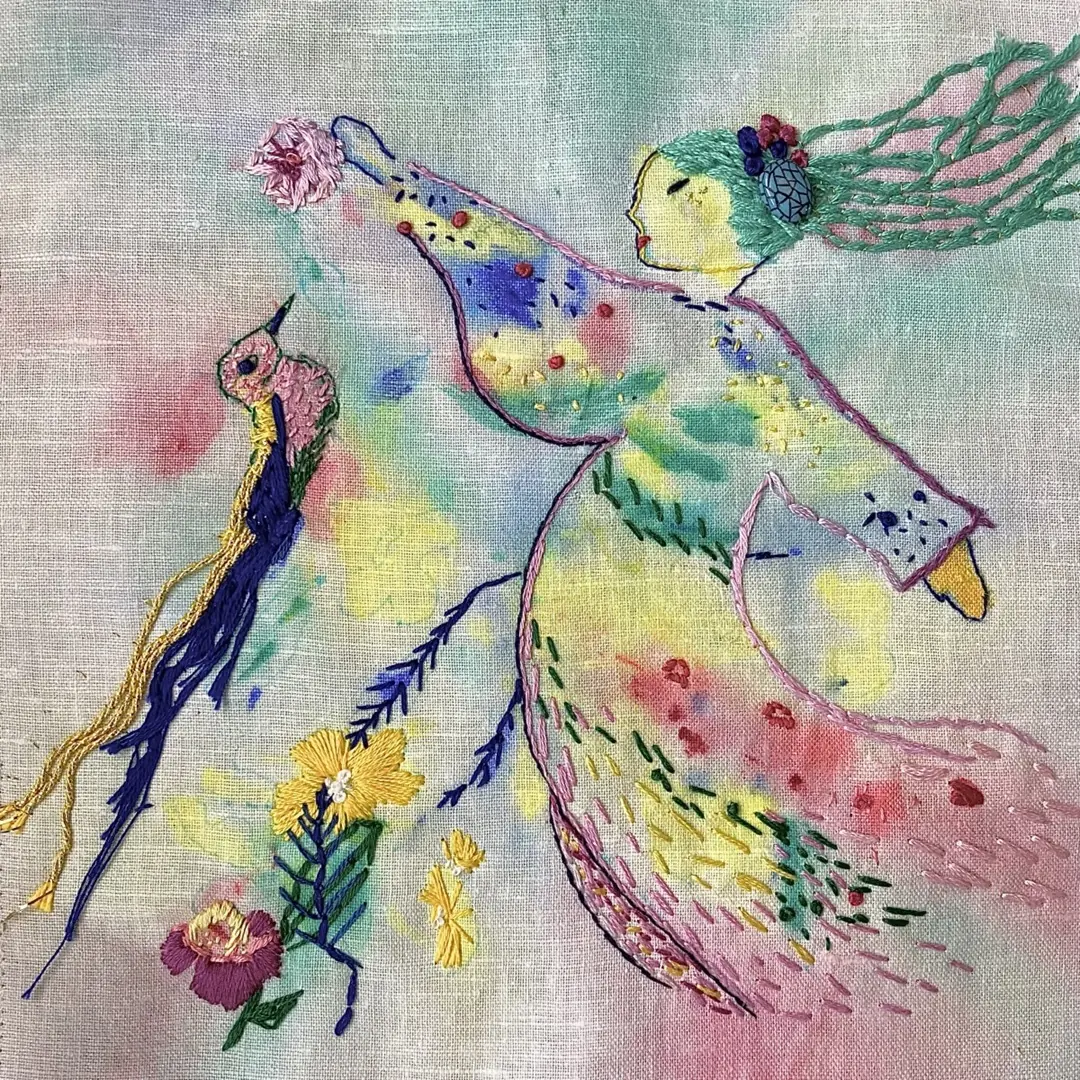
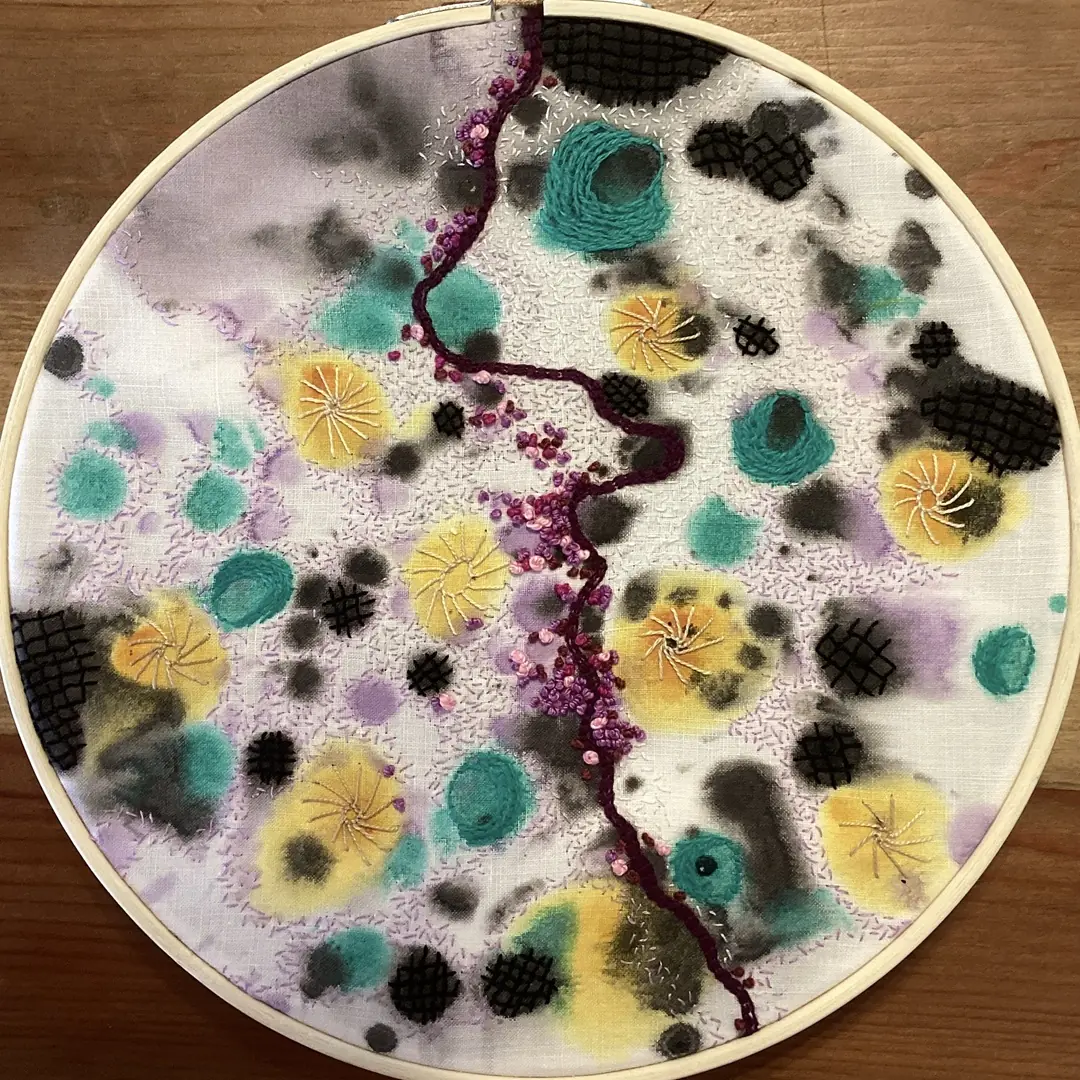
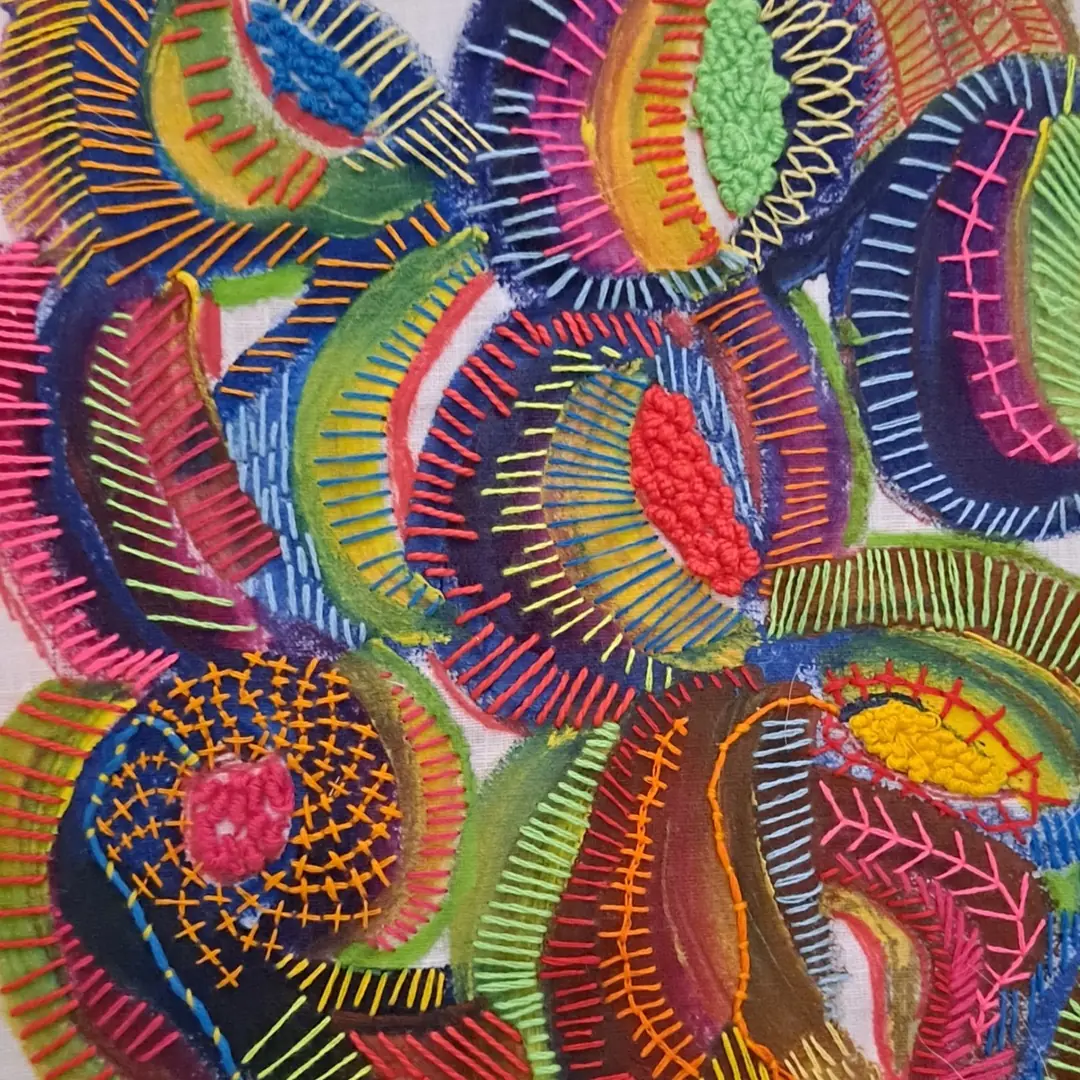
Workshop takeaway
There are lots of ways to use acrylic paints on fabric. Monique demonstrates how to wet the whole fabric so that the paints blend together. Or for a more controlled effect, how to paint small areas of fabric with water before adding paint. She also paints on dry fabric, and on patchworks made using different fabrics.
When paint is added to fabric it can take on a life of its own, leaving the end result a little unpredictable – every result will be different. That’s what is so exciting about this technique. It’s a great way to start a project when you’re feeling uninspired. Simply paint some fabric, choose some threads and start stitching.
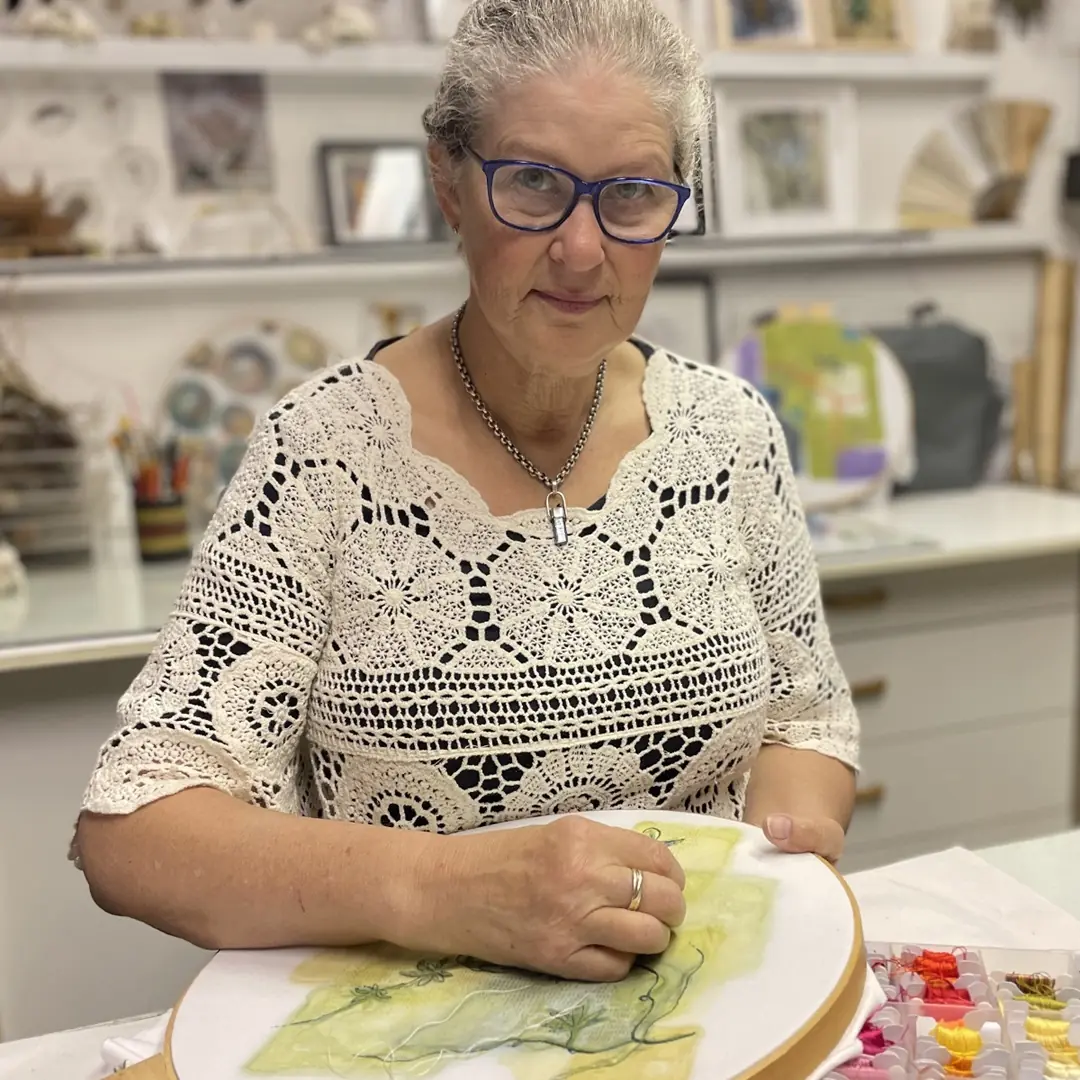
How to join Stitch Club
We only open registration for Stitch Club occasionally – this means we can spend the majority of our time creating the best experience possible for everyone in the Stitch Club community. All members can really get to know each other and share what they’re discovering, in a supportive and thriving community-driven environment.
Our members often share with us the immense satisfaction and thrill they experience as active participants in a vibrant global community, able to learn from a diverse range of some of the world’s most exciting textile art practitioners – and each other.
If you’re keen to join the waiting list or find out more about Stitch Club, sign up here.
If you’re interested in learning how Stitch Club came about and you want to discover more about some of the workshops we’ve featured in the past, check out Stitch Club: The story so far.
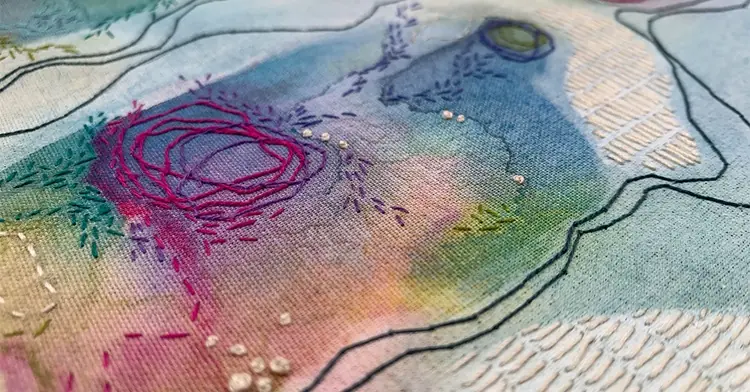

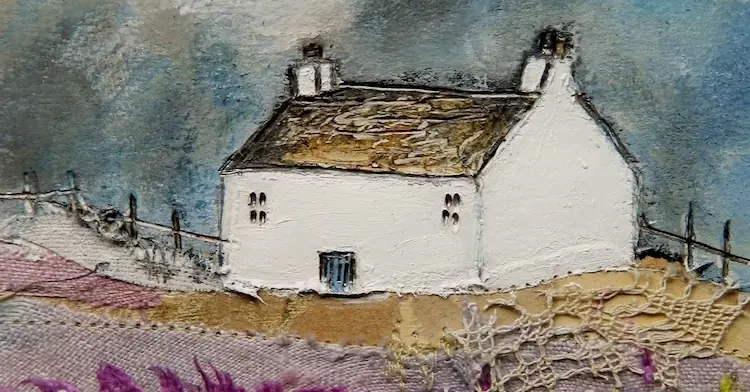
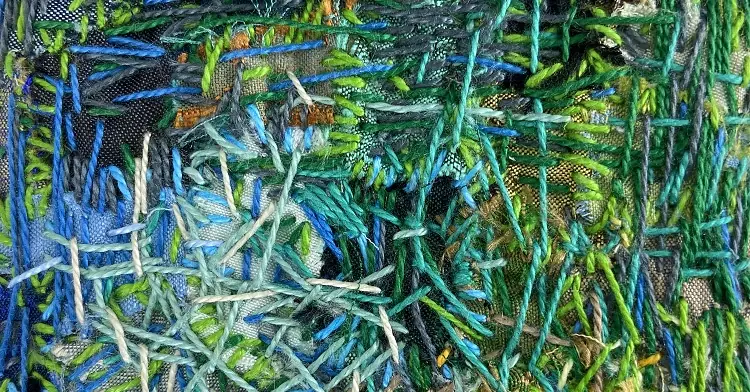
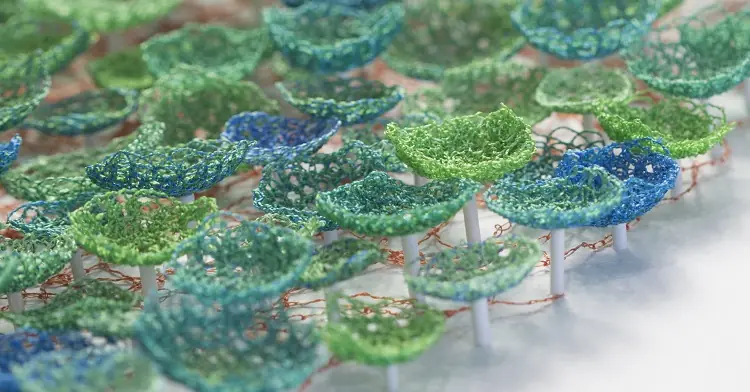
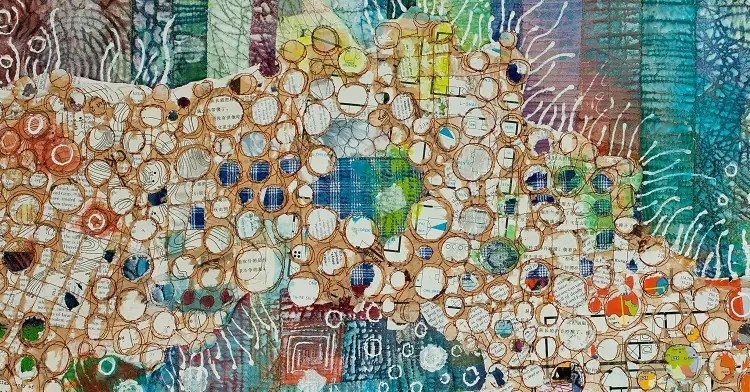
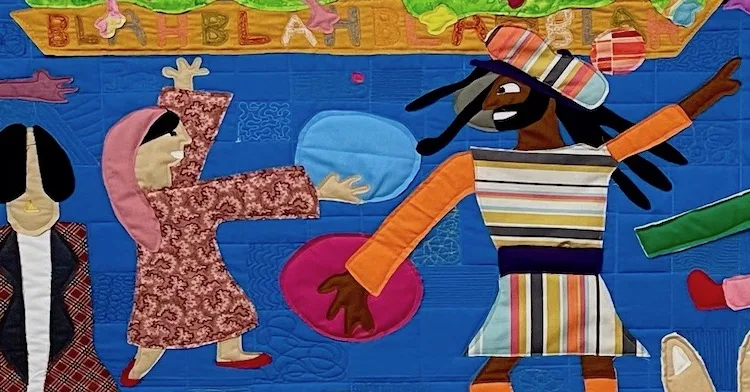
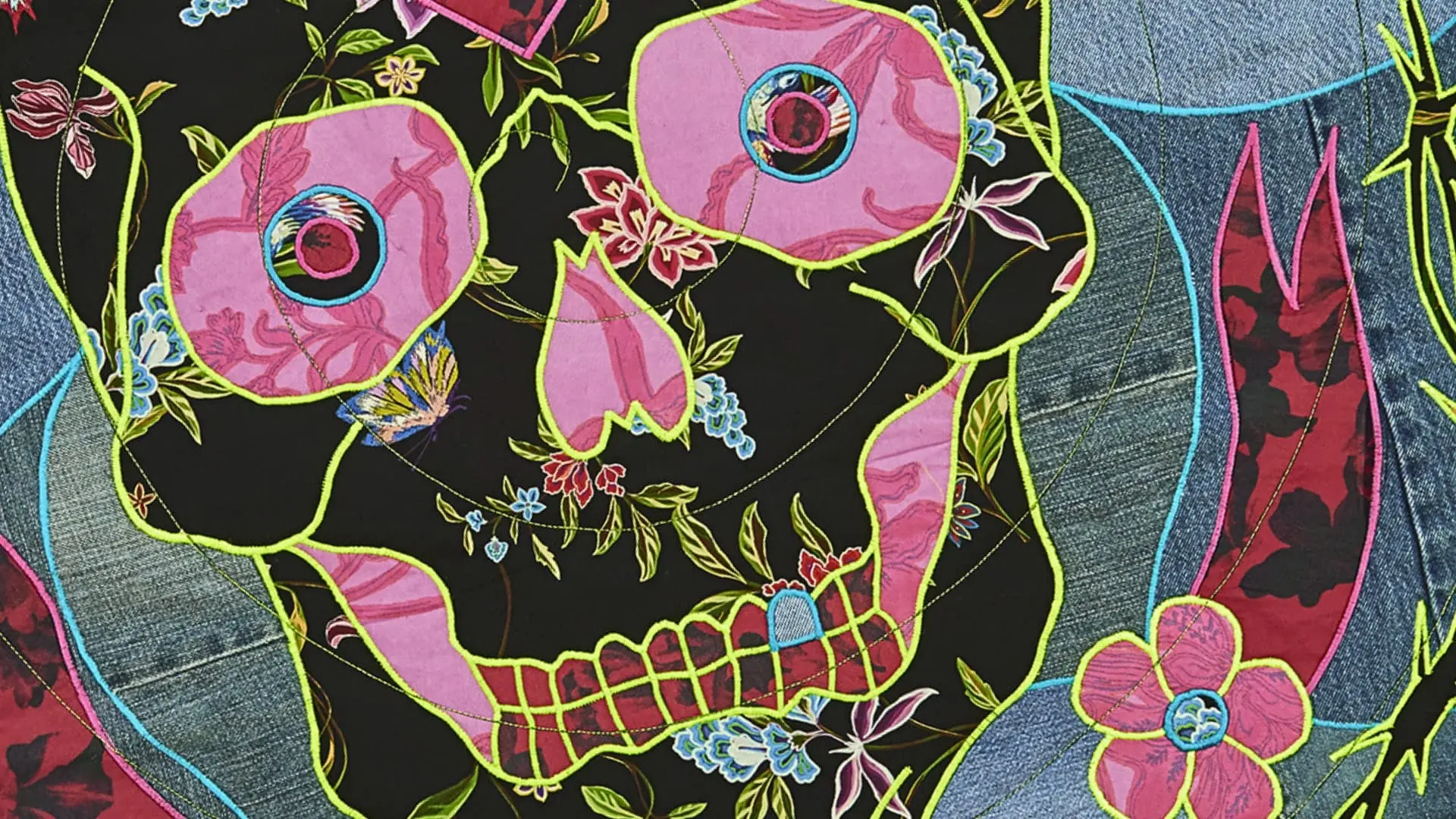
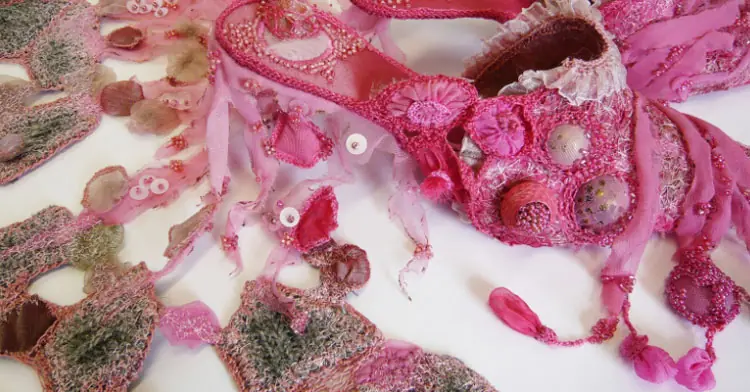
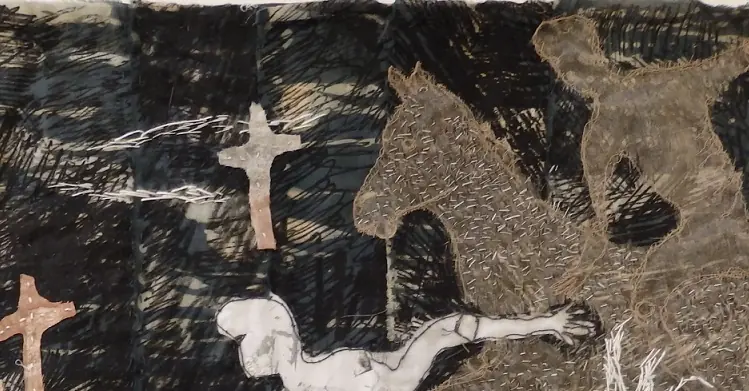
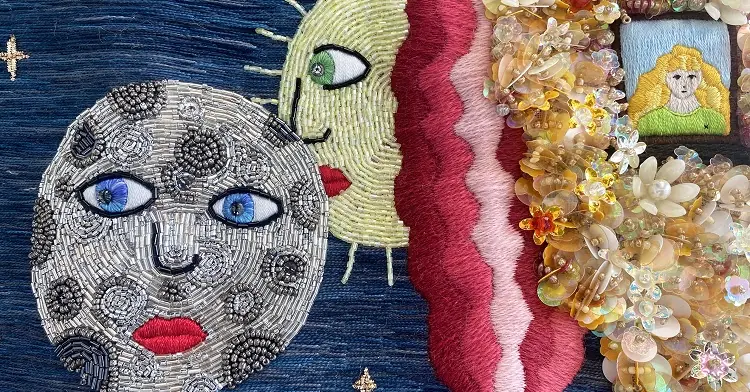
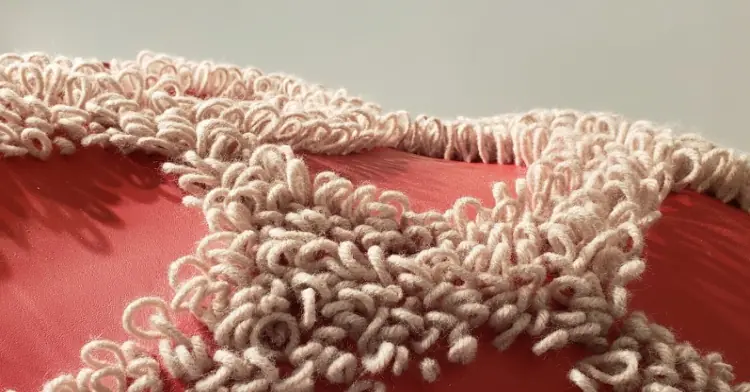
Comments